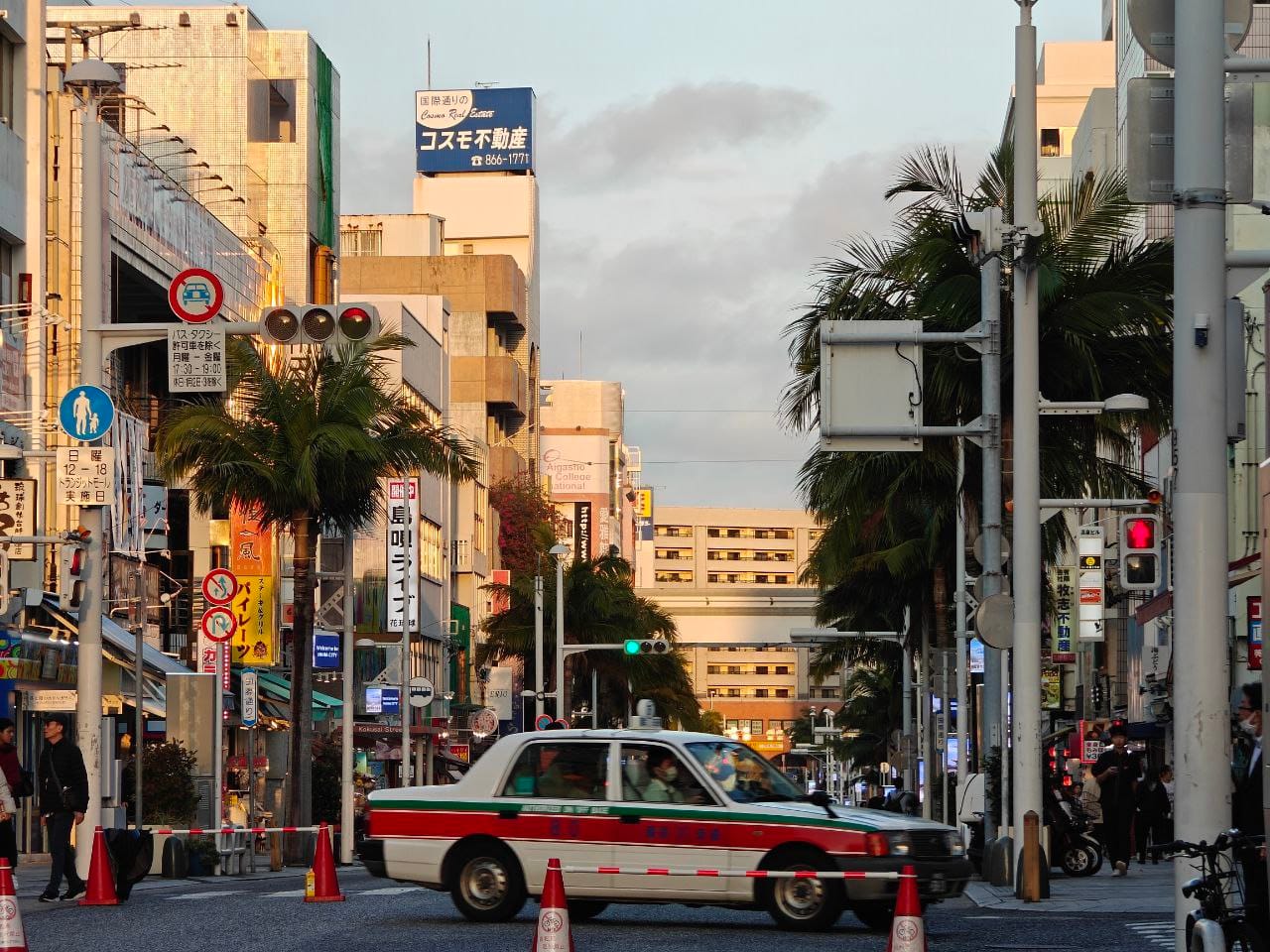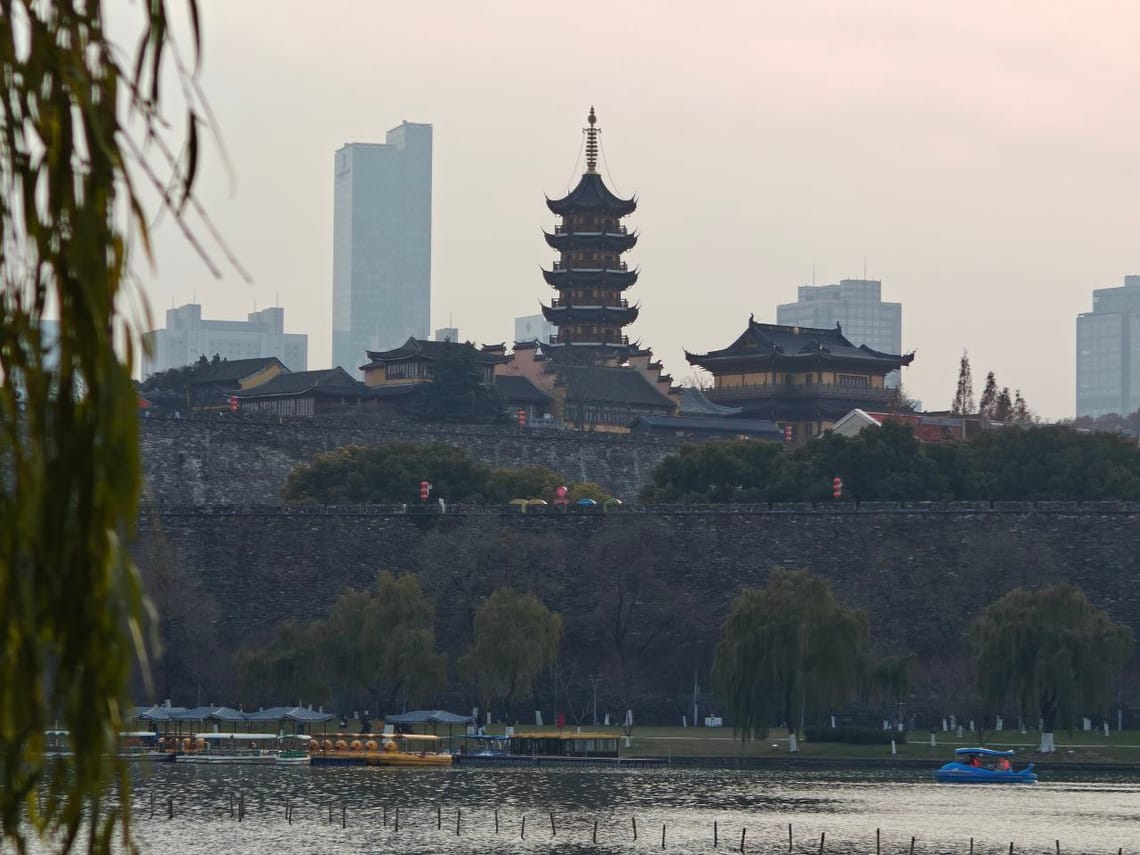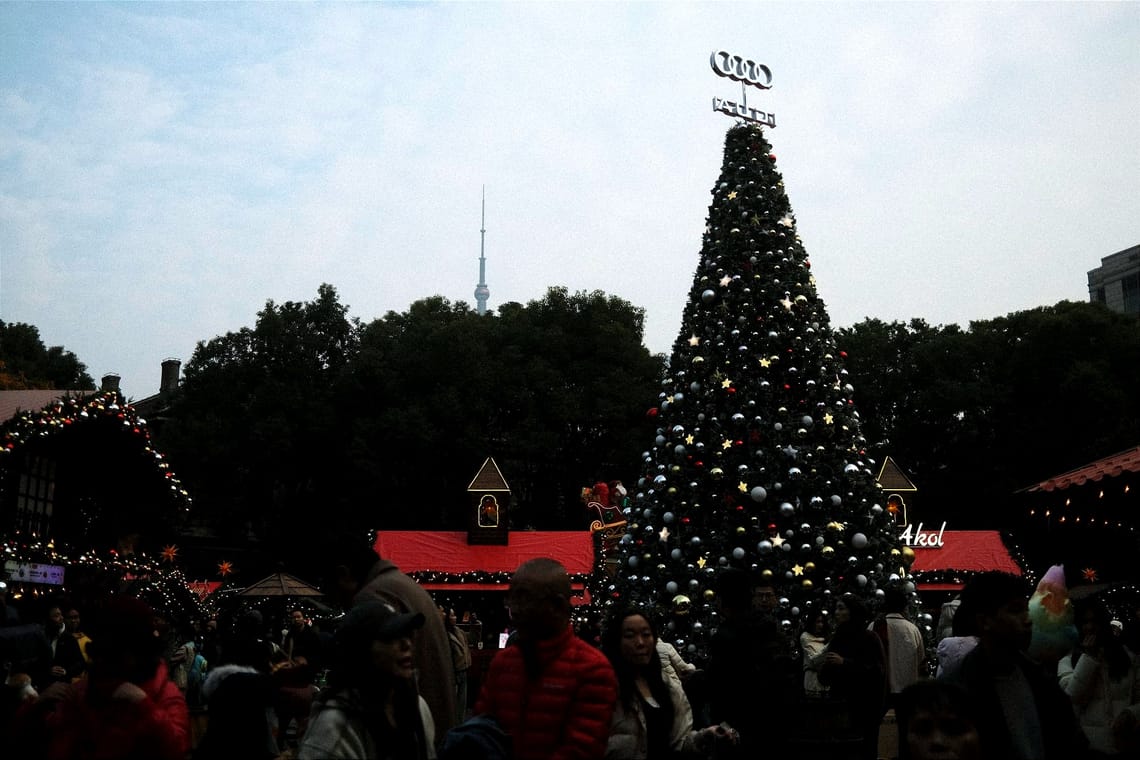This trip was completed in January 2025.
Okinawa, known as the Hawaii of Japan, is much closer to Taiwan than the main island of Honshu in Japan. It is also a popular island for self-driving tourists just like Jeju in South Korea. However, we decided to try if exploring Okinawa is practical without renting a car. We also took this opportunity to enjoy the start of cherry blossom season in Japan, since Okinawa is the first to welcome it in Japan (1 to 2 months before the rest of Japan). Below are notable highlights of our trip.
Transportation: Airport shuttle and public transport options
Rating 7.9/10
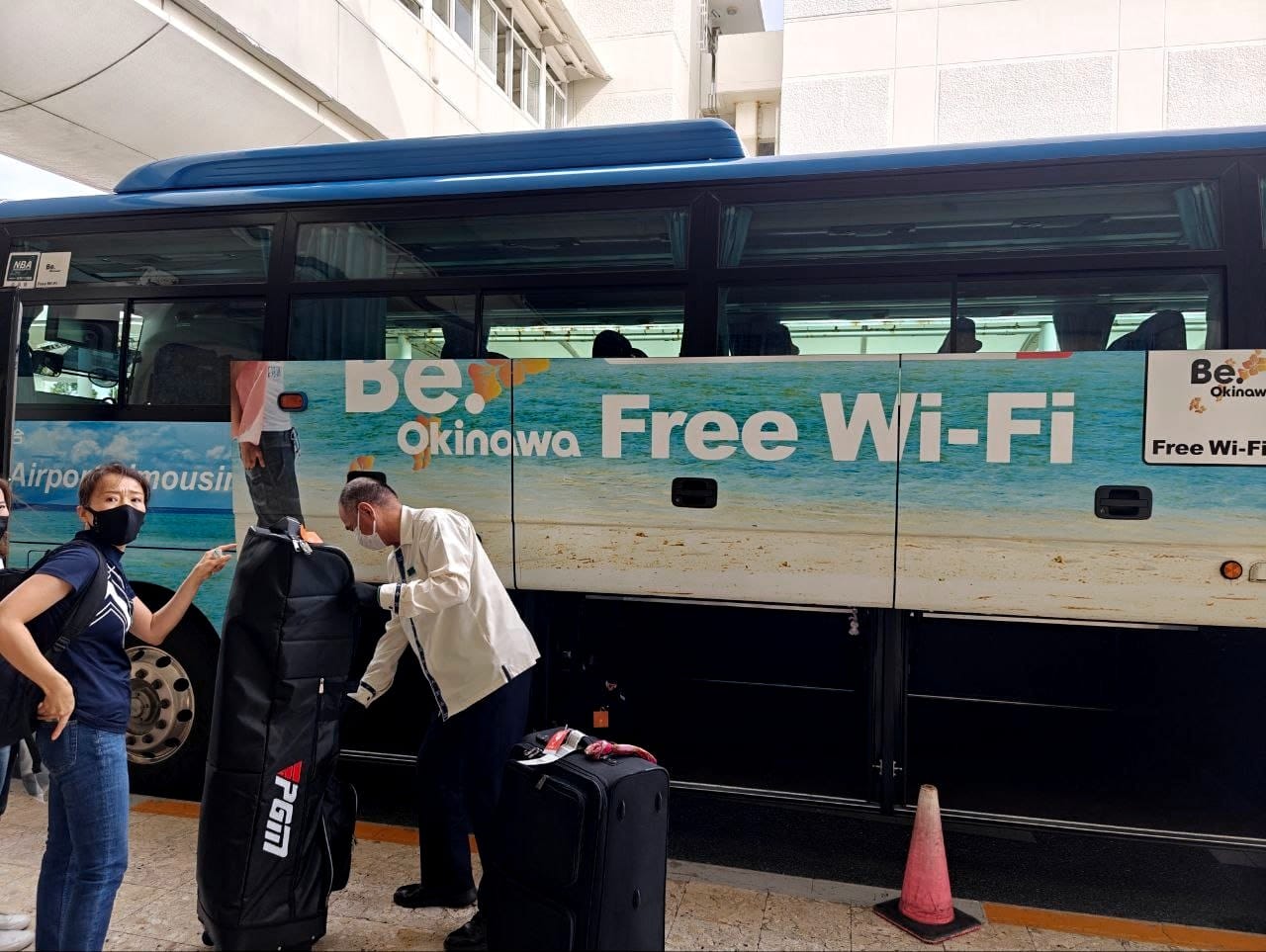
One of the harder parts of exploring Okinawa main island by public transport will be the longer-distance commute outside of Naha. As we booked our hotel in Seragaki, we find that it is much more straightforward to opt for a specialised airport shuttle service instead of their usual public bus service.
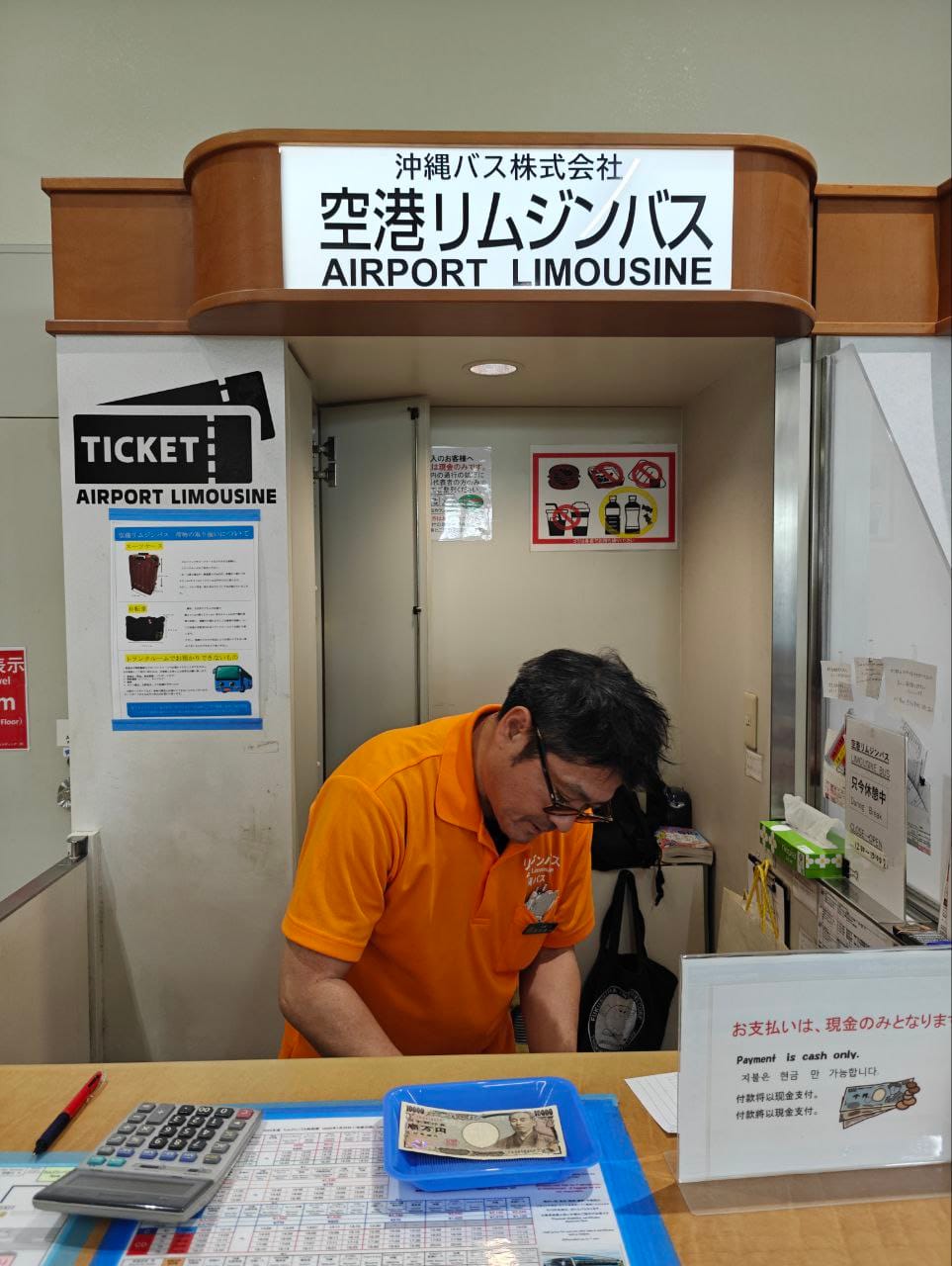
The airport express bus has a counter in the arrival hall of Naha Airport, and it is necessary to purchase a ticket there. There are various route lengths that can bring passengers all the way to Nago at the northern side of the island, so simply let the counter staff know which hotel you are staying at and they can allocate the right service route to you. This is most applicable for hotels outside of Naha.

However, if you stay within Naha, the monorail line called Yui Rail is the most convenient way to get from Naha Airport to your hotel in Naha city. The monorail is directly connected to the airport and it is straightforward. Currently, the IC card that is widely used in Japan can also be used in Okinawa on the monorail line.
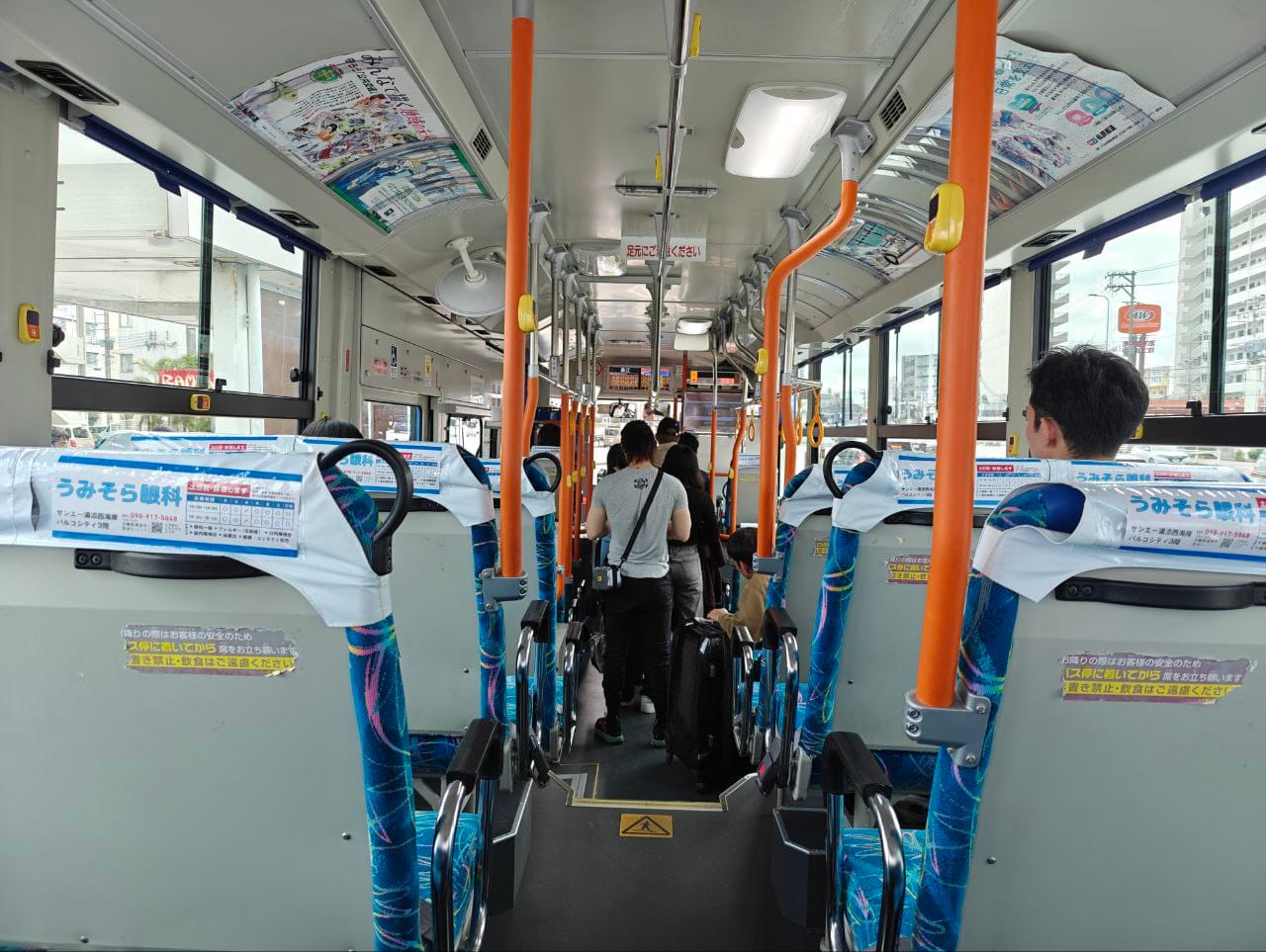
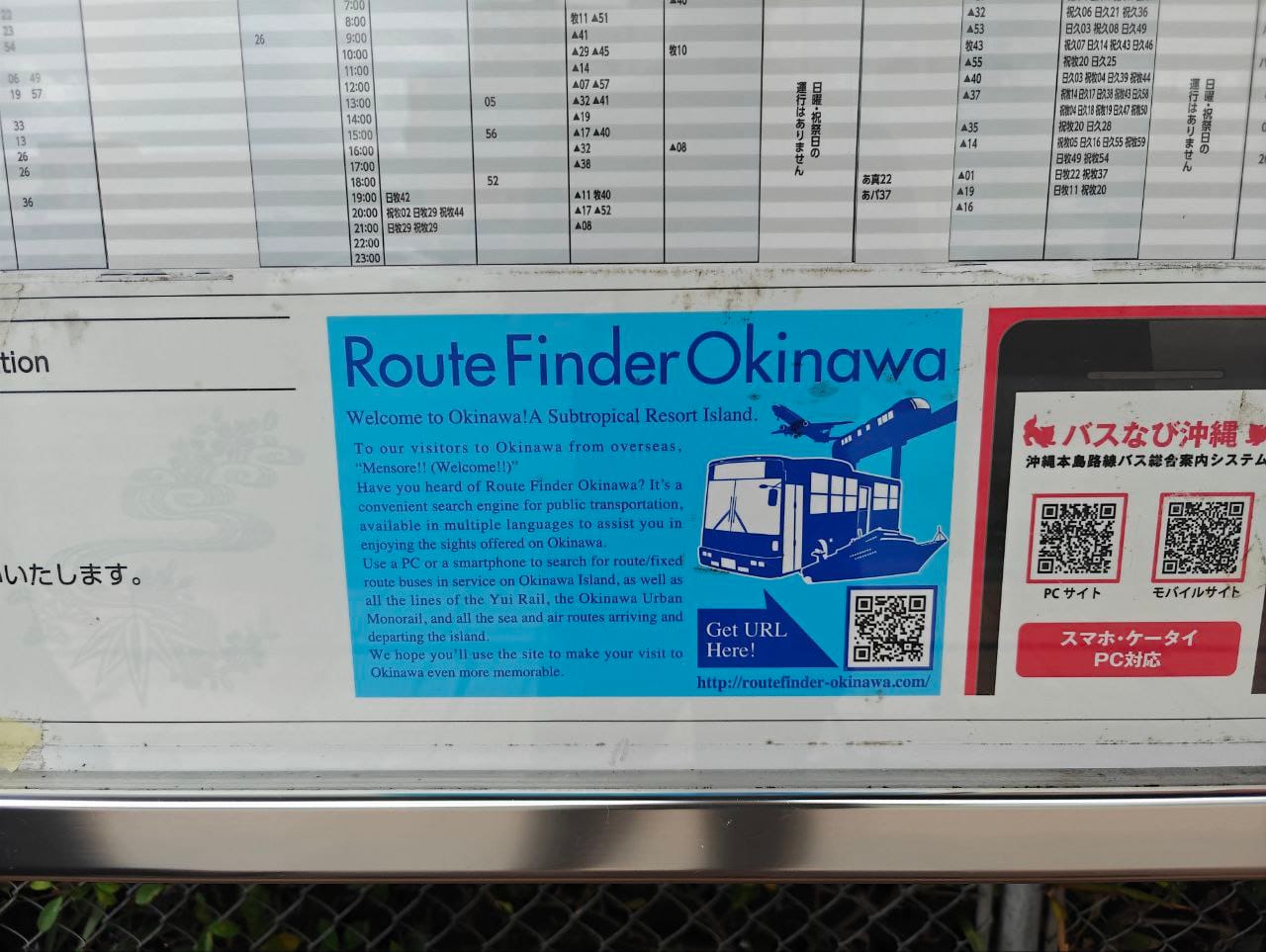
However, the bus services around the island do not accept those IC card payments such as Suica or Pasmo (except selected bus routes like bus service 120 which has been modernised and equipped with the payment system on the bus). Public buses generally have low frequencies and actual arrival times at the bus stop can be irregular and different from the scheduled timings. That said, we managed to take a public bus around and return back to Naha from Seragaki, including packing in a visit to the quaint Minatogawa Stateside Town.
Accommodation: Hewitt Resort Naha
Rating 7.8/10
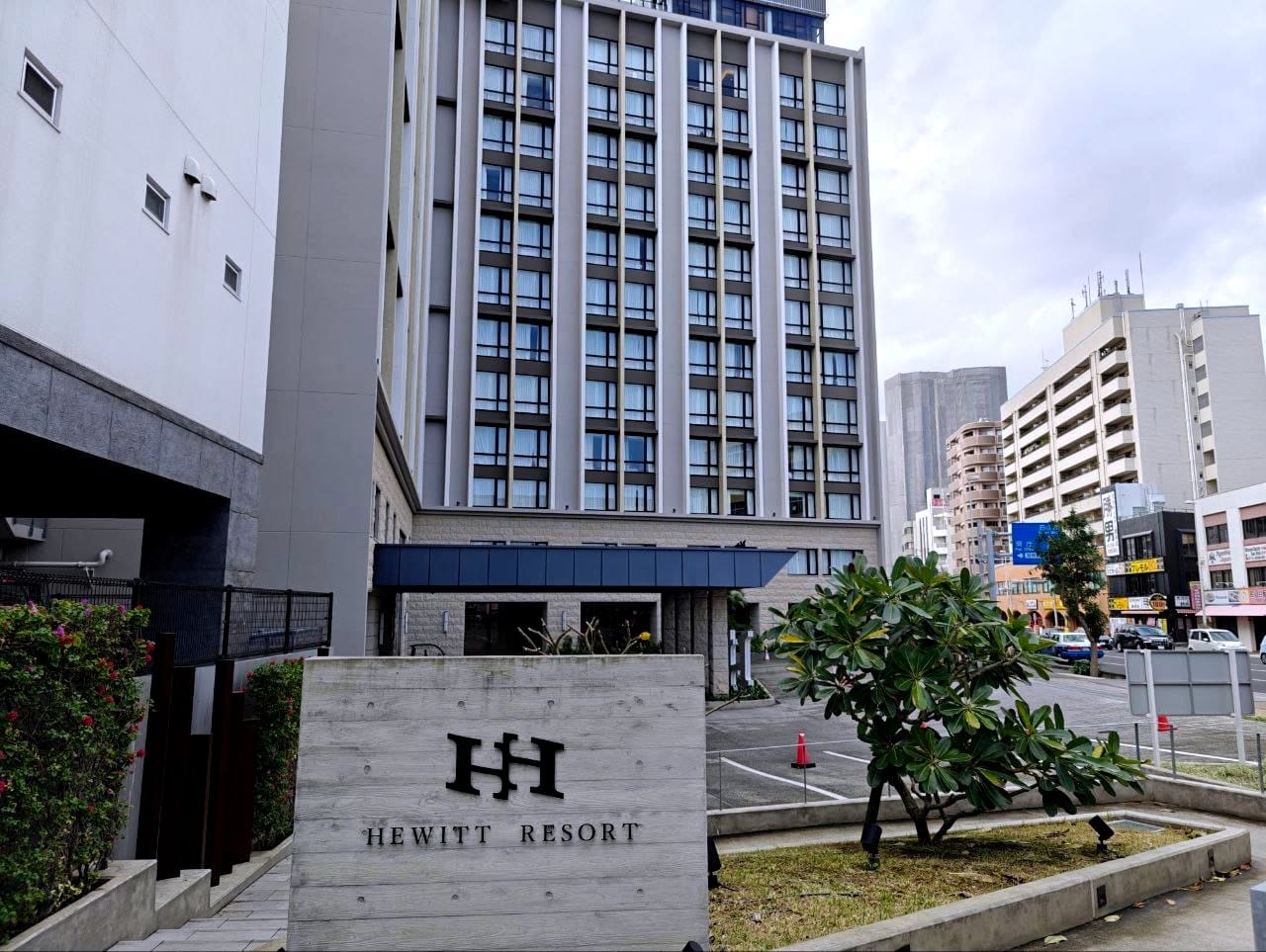
We find this hotel to be strategically located due to its proximity to the monorail station. It is also near one end of Naha's main commercial walking street so the touristy area is easily accessible. Despite its central location, the entrance does not lead to the main tourist street, hence it is suitable for guests who enjoy a peaceful surrounding.
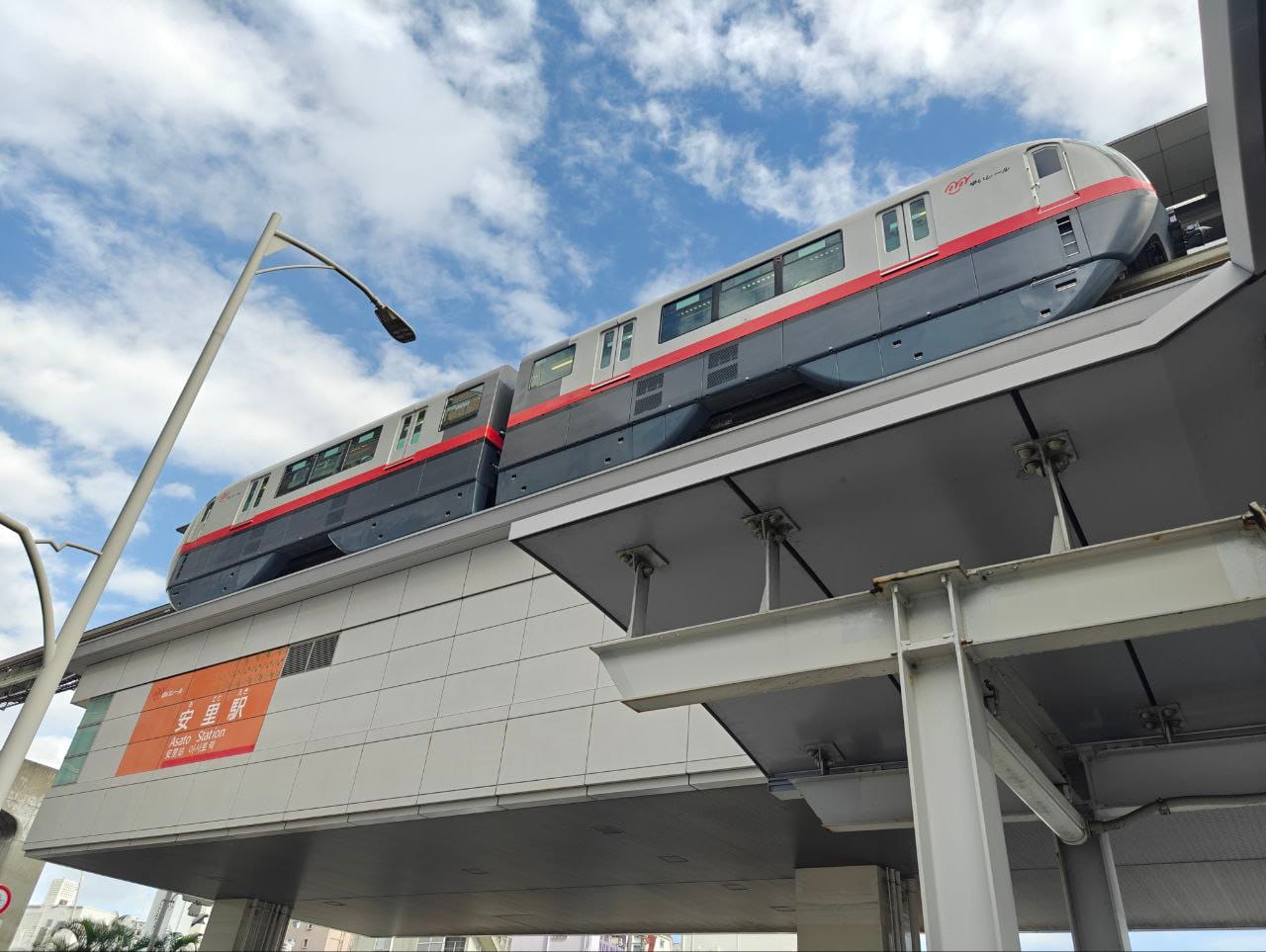

It is quite a popular hotel so it can get crowded and busy around reception area and during breakfast. There is a rooftop outdoor pool which offers a beautiful view of the city. However, the operating hours of the pool is rather short, with last entry at 5.30pm during the season that I was there and pre-registration is needed to use the pool.
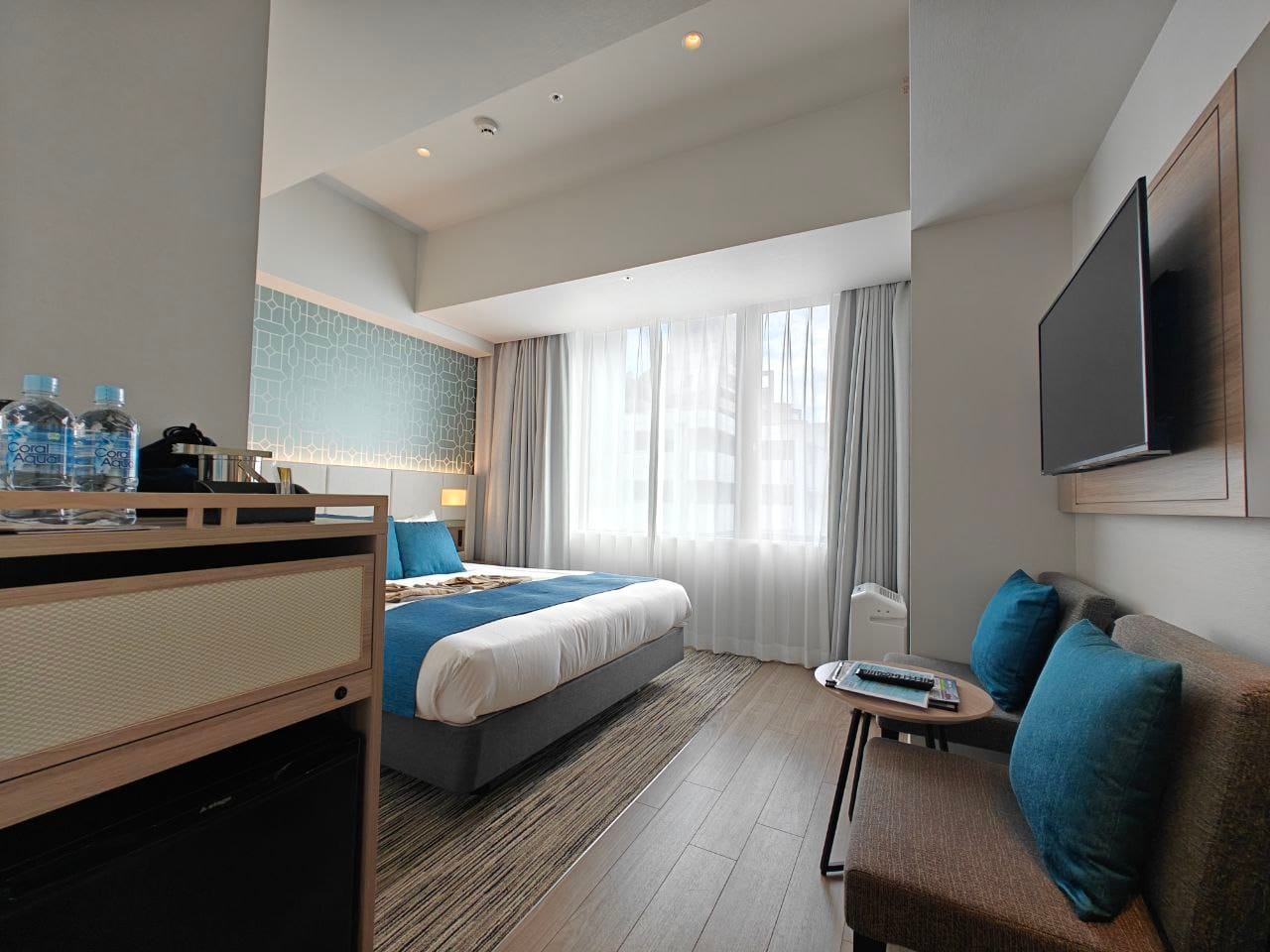
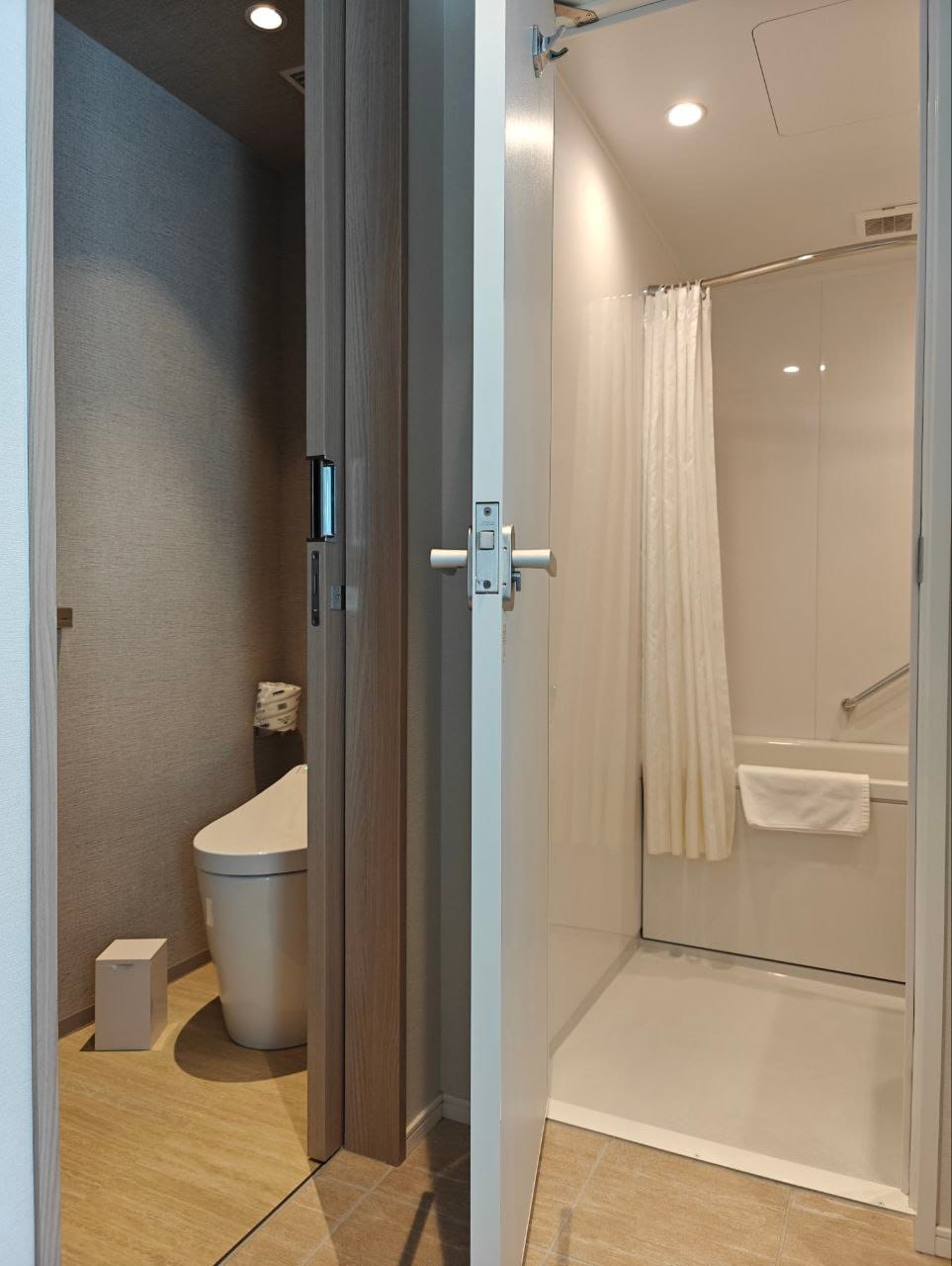
One issue we had was that the corridors to the rooms were quite dimly lit. As for the rooms, they are considered small but cosy. It didn't feel very cramped but certainly the bathroom can be rather tight. Not sure if it was only our room, but the whirring sound from the air conditioning can be heard quite clearly especially at night when the environment was silent.
Rooms are around 16,000 JPY/night.
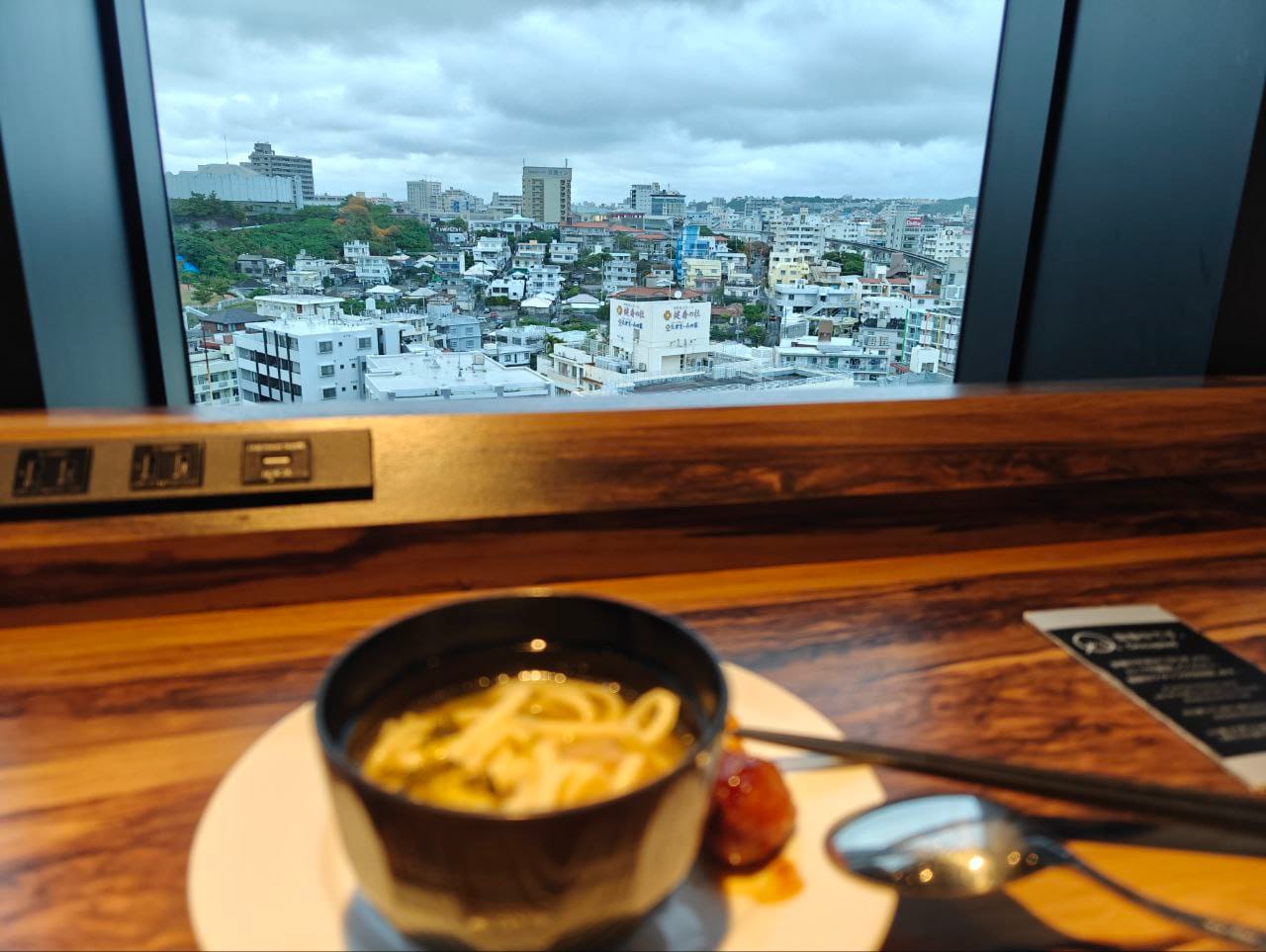
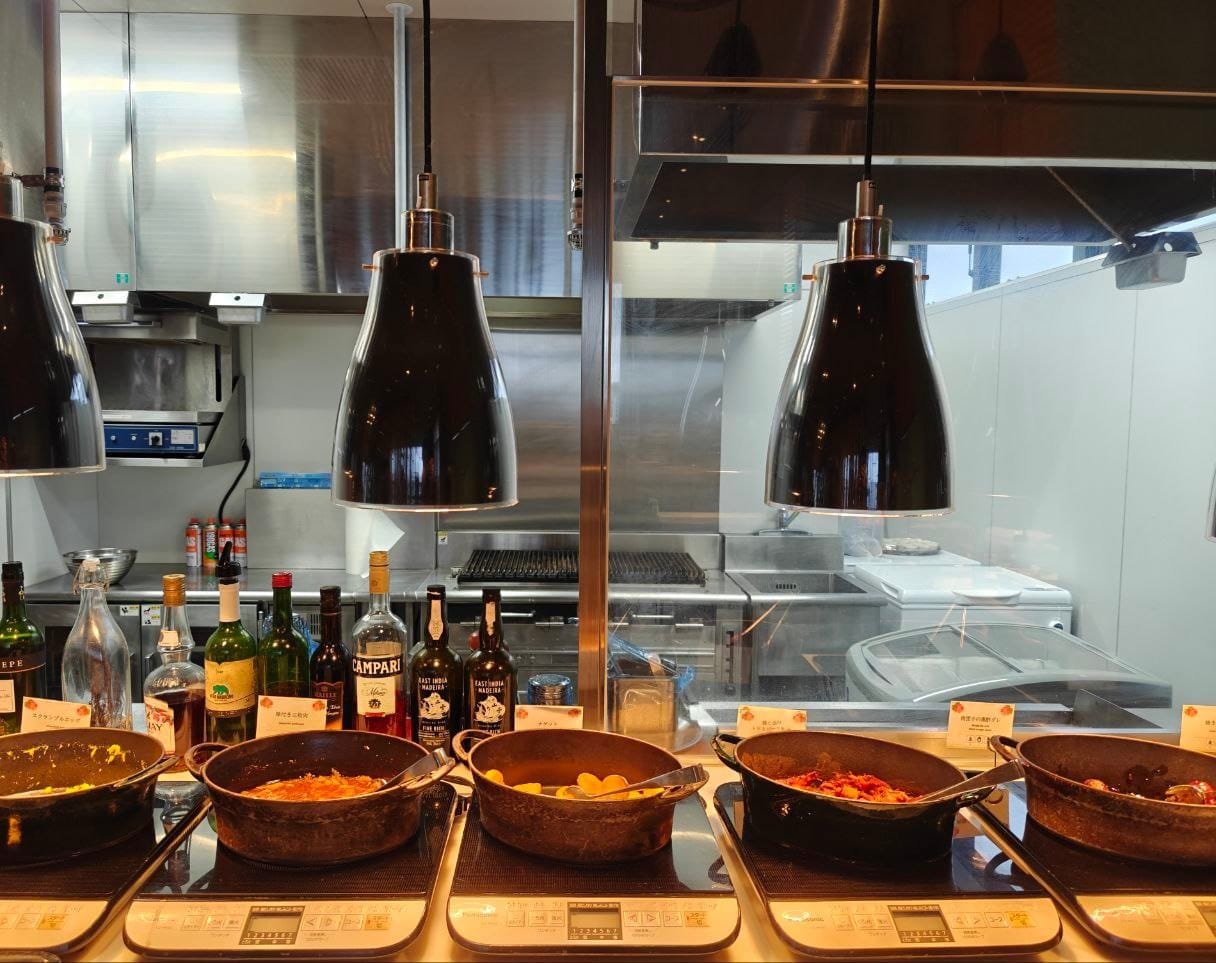
While the corridor and room can be improved on, their breakfast was a hit though. There is a choice of two venues for breakfast, either the rooftop or the lobby. We were not disappointed with the breakfast view from the rooftop, and the food had a good spread of local and international cuisine.
Accommodation: Hyatt Regency Seragaki Island
Rating 8.3/10
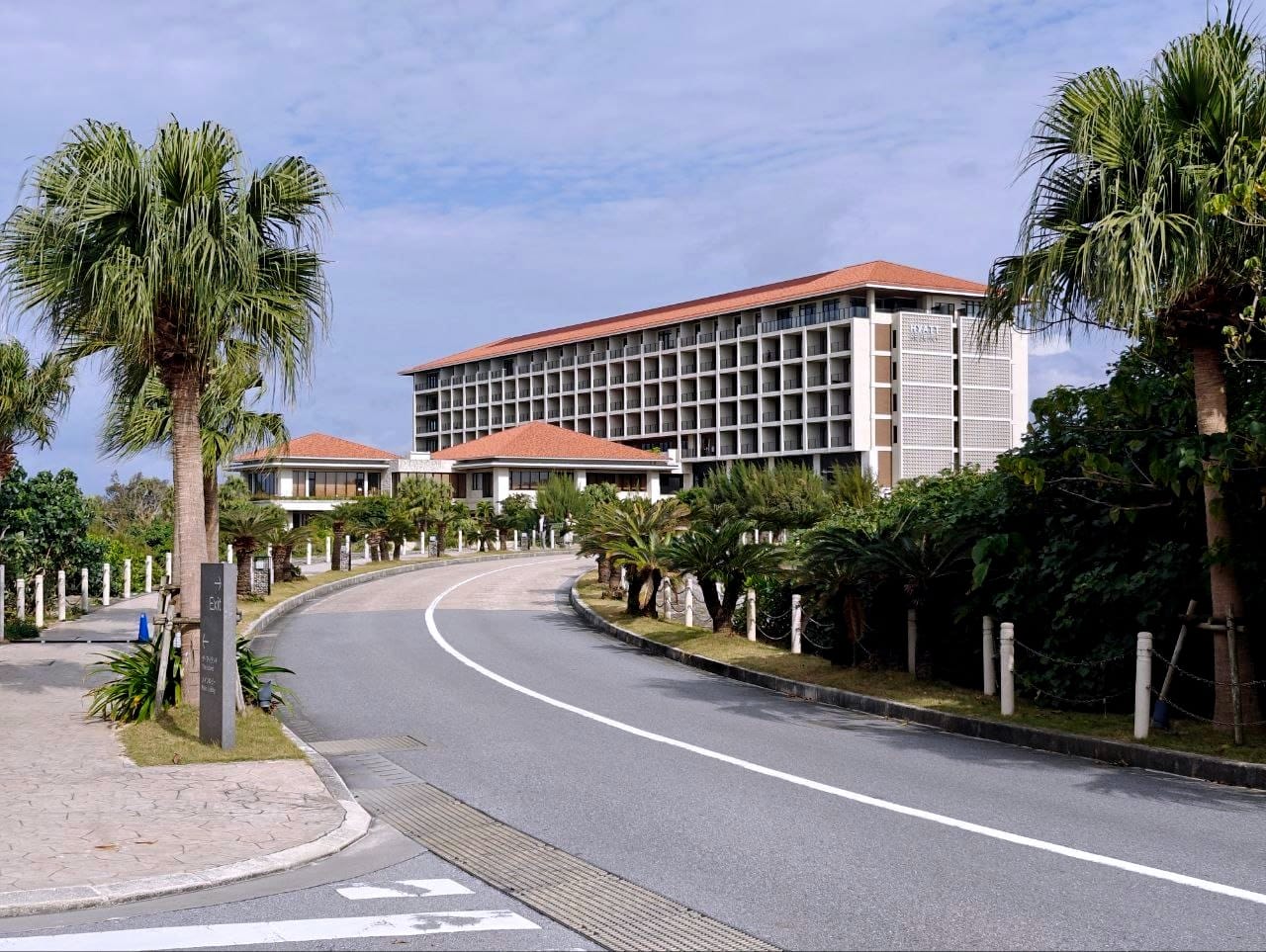
This hotel is located on a small private island off Seragaki, near the resort strip of Onna. With most of the upscale hotels along the main road in Onna, Hyatt Regency Seragaki Island offers a more idyllic atmosphere on a quieter slice of the coast.
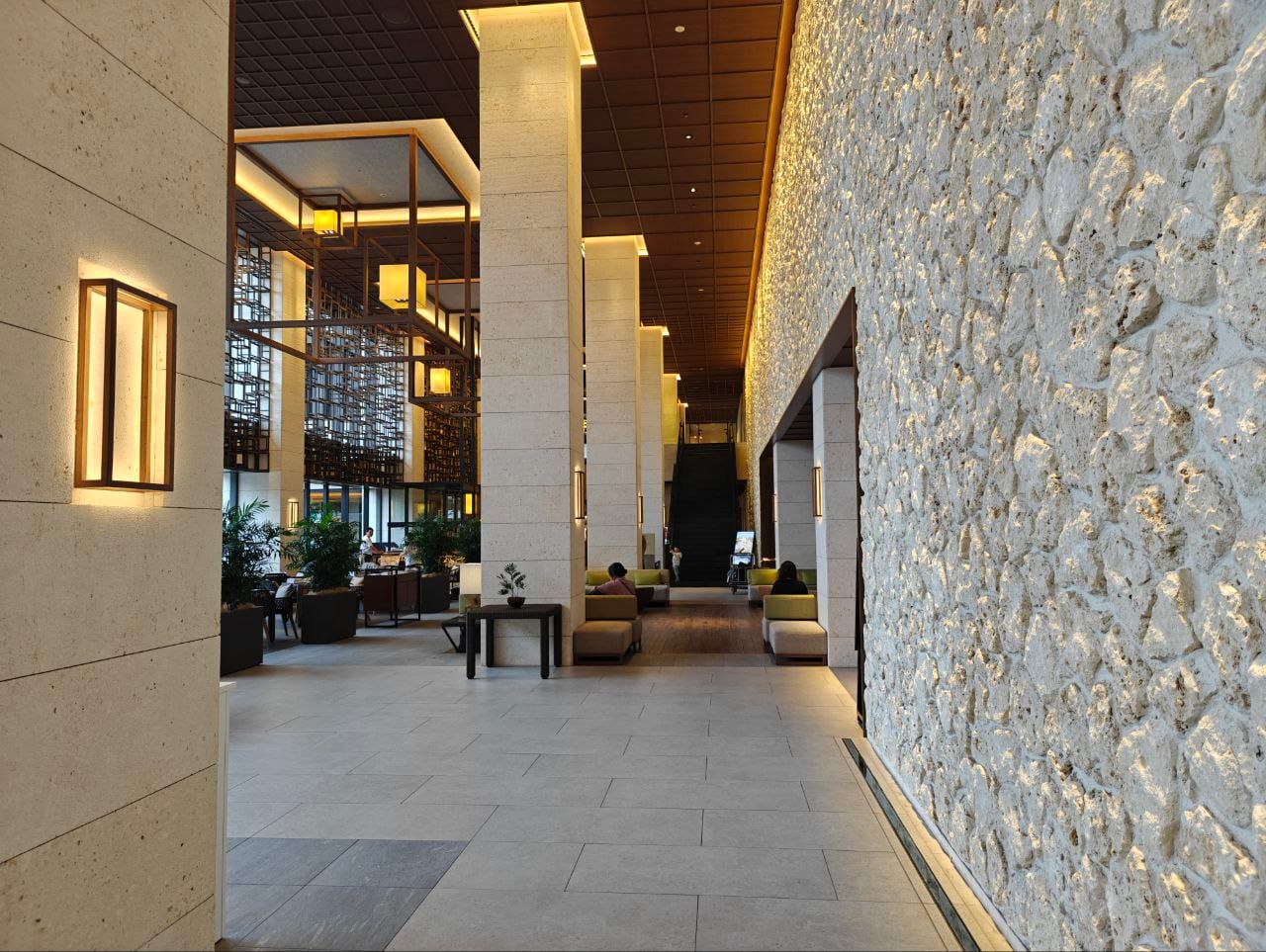
Hotel lobby is grandly decorated in the modern sense, a good mix of indoor natural materials and garden scenery. The large resort land space gives guests much room to explore the compound, the highlight being the outdoor pool area and a white chapel nestled among the lush greenery.
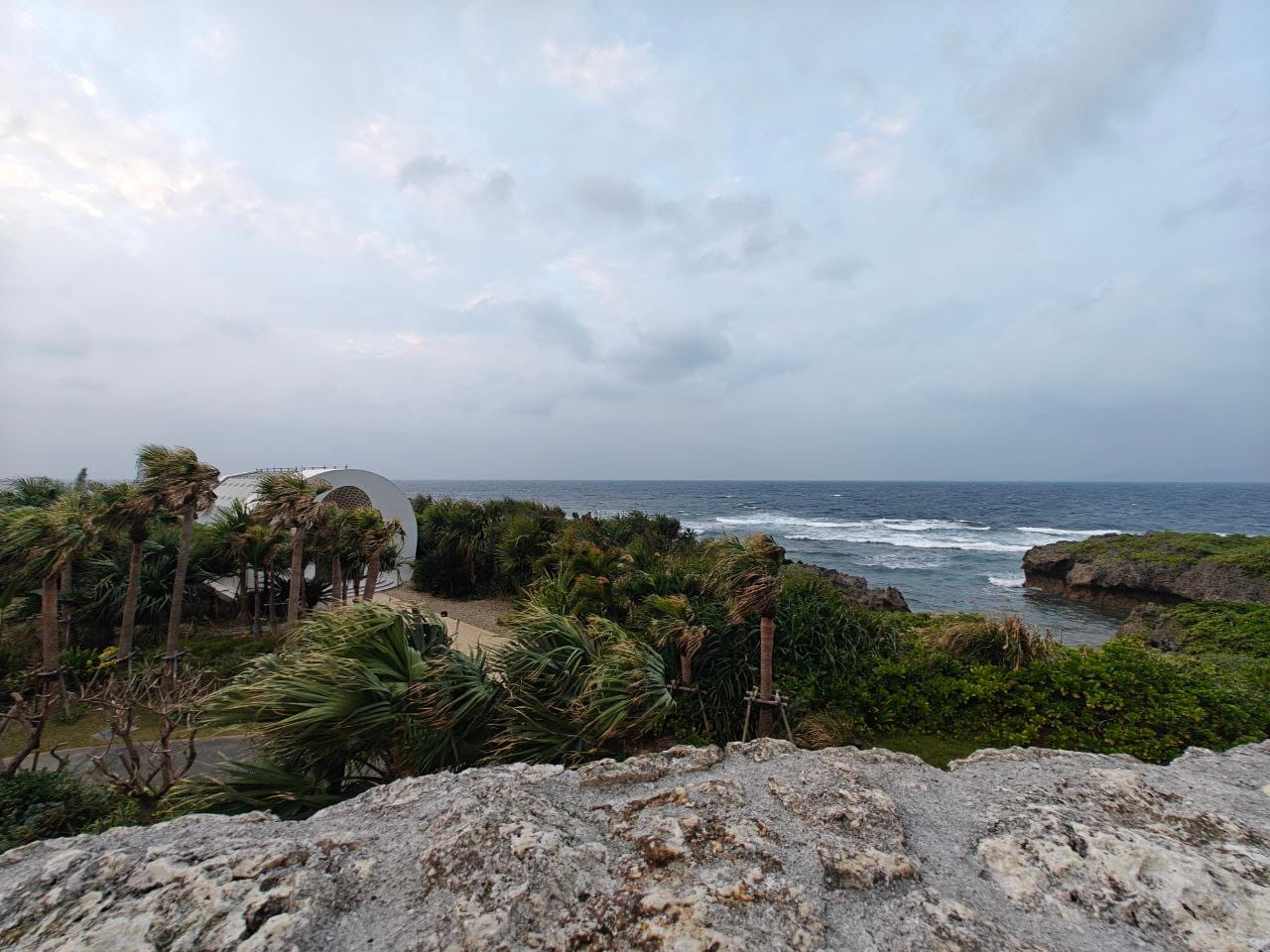
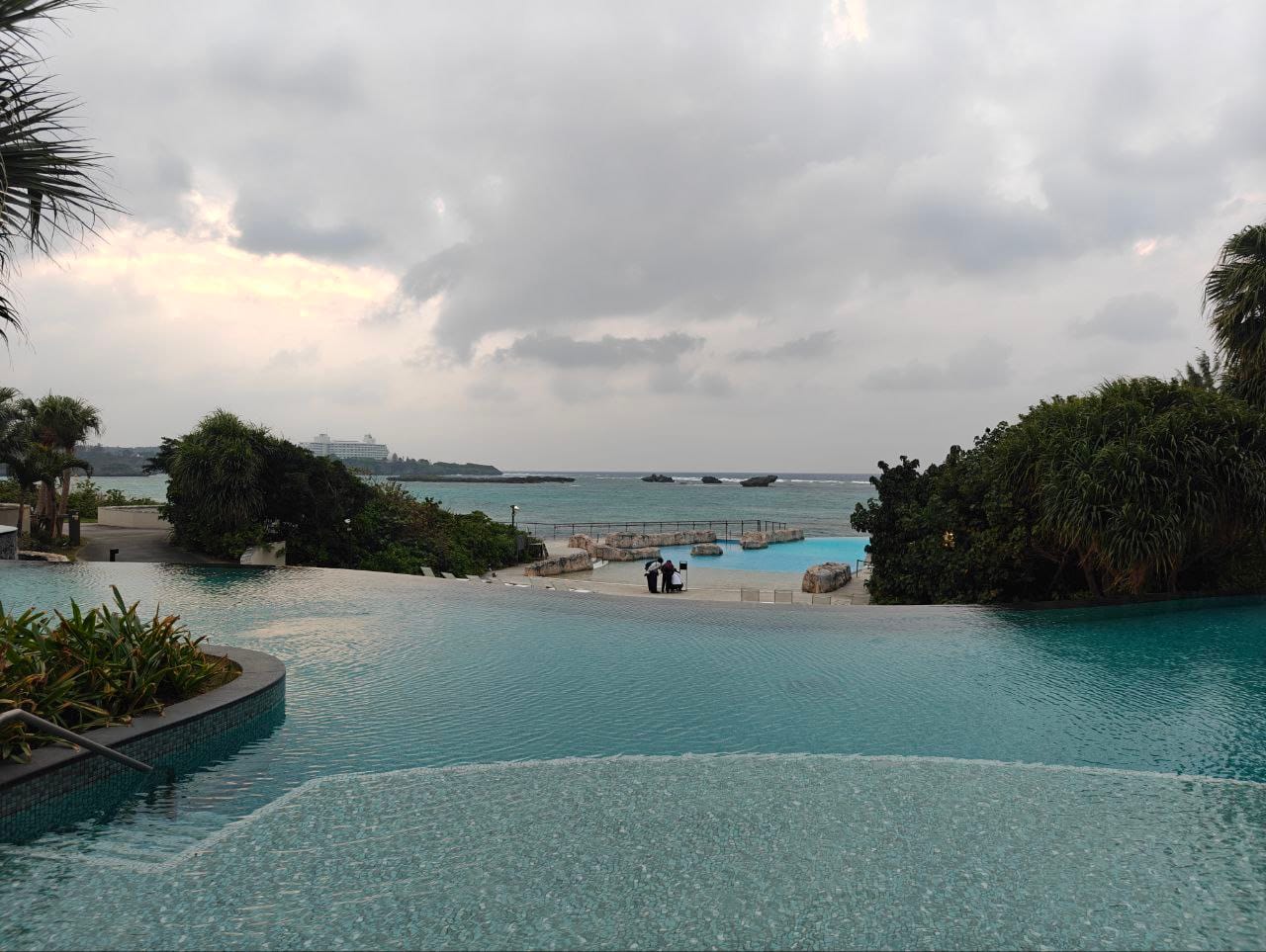
One of the lower level pool is a seawater pool which overlooks the glistening sea just right next to the pool. There are also private beaches where numerous sea activities and equipment are available for use. Our favorite part of the resort happened to be the short bridge connecting the resort island and mainland where a late evening stroll will be extra leisurely.
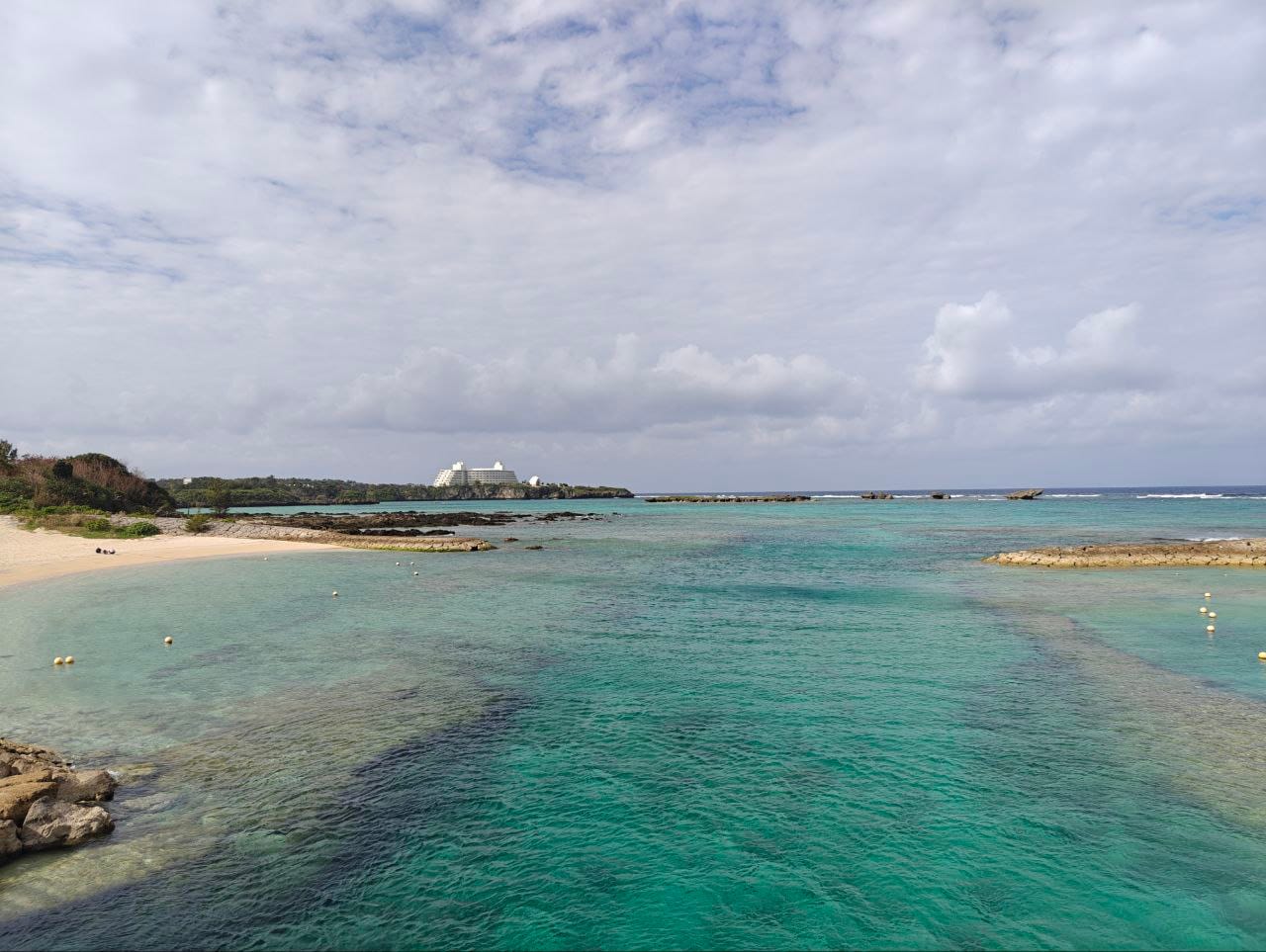
Rooms are of a decent size, with spacious balcony and beautiful views for all room orientations. One characteristic of buildings in Okinawa is that they are usually thick structures built with concrete so as to withstand the harsh weather and seasons of the year. For this resort, the interiors are designed in a manner that guests will still enjoy the aesthetics of the rooms and common areas. Fittings are high quality and furnitures are meticulously selected to offer a consistent resort feel. Rooms are around 42,000 JPY/night.

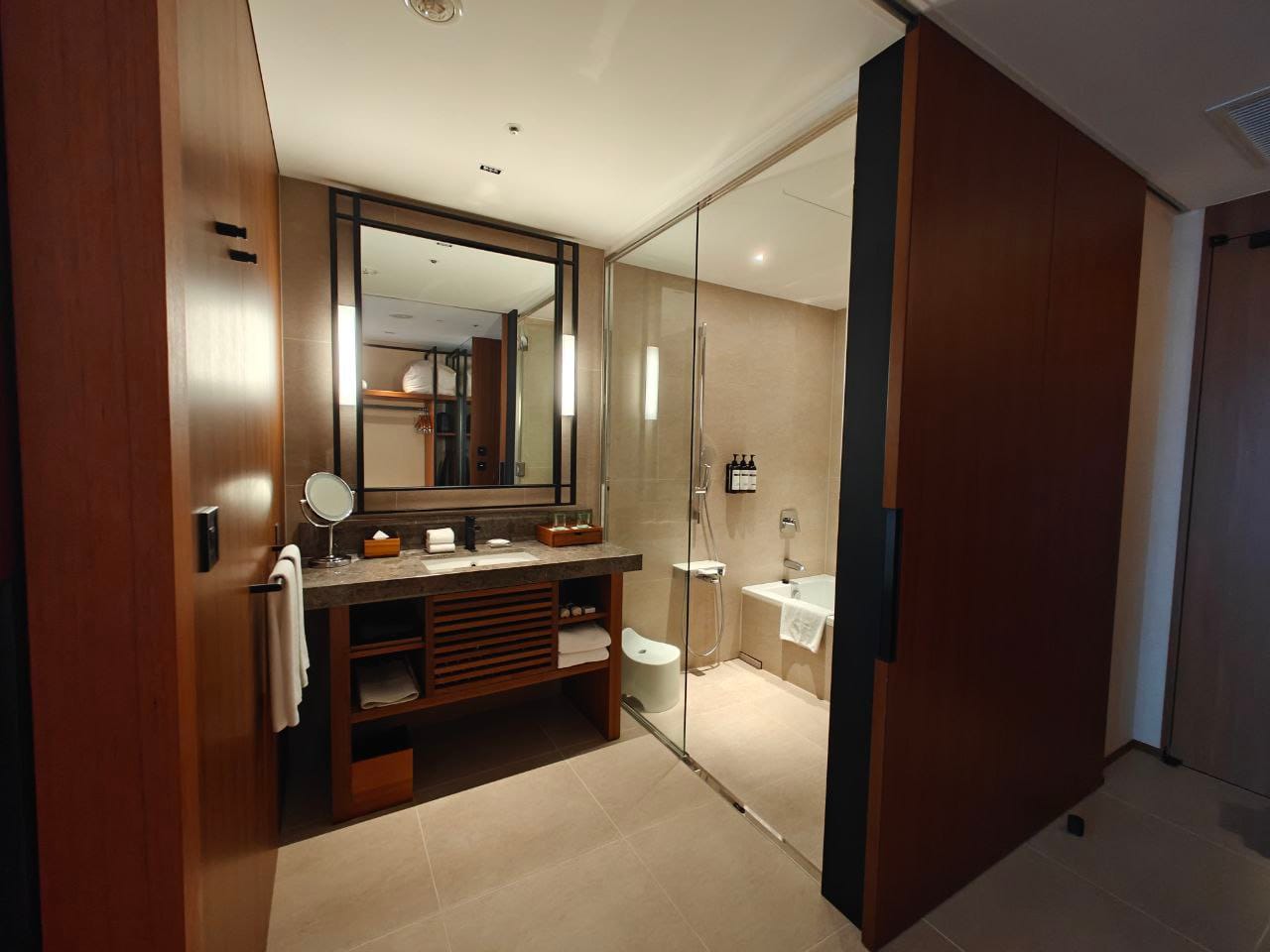
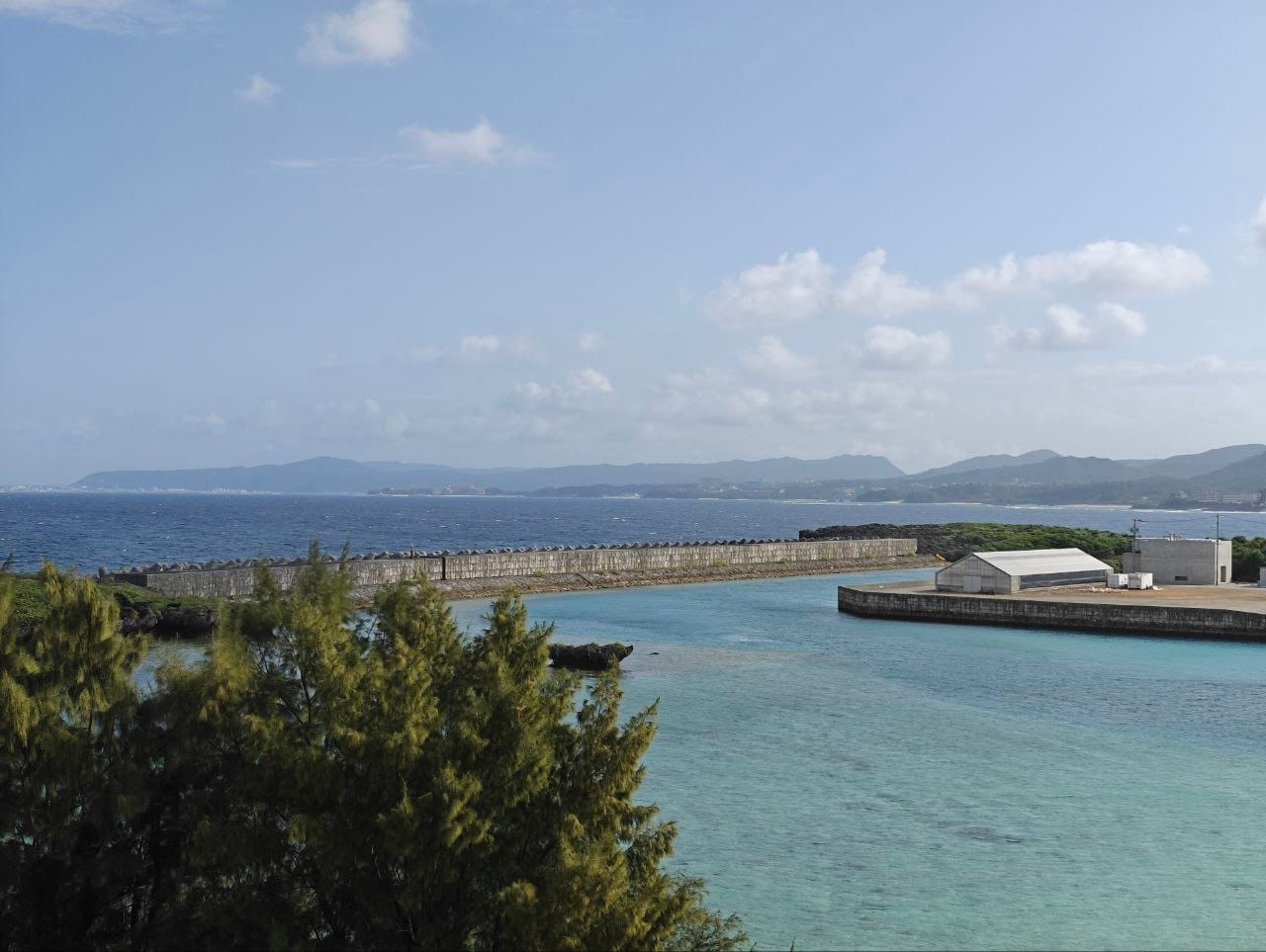
Dining: Yanbaru (Youngbar) Seragaki
Rating 8.6/10
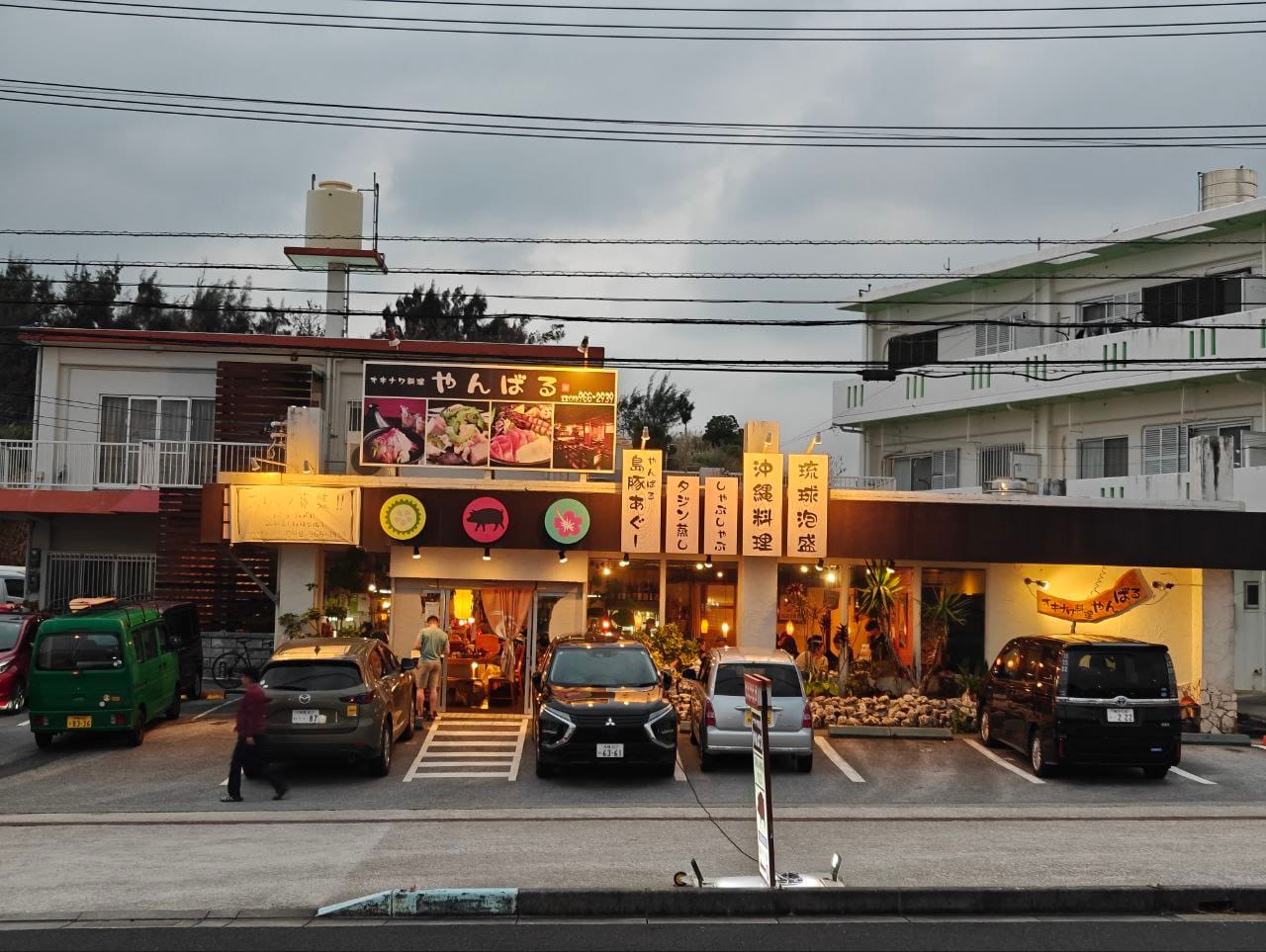
This place is not as easy to find or make reservations for as an overseas tourist. You can find it as Yambaru on Google Maps. However, Yanbaru is certainly a dining highlight for us in Okinawa.
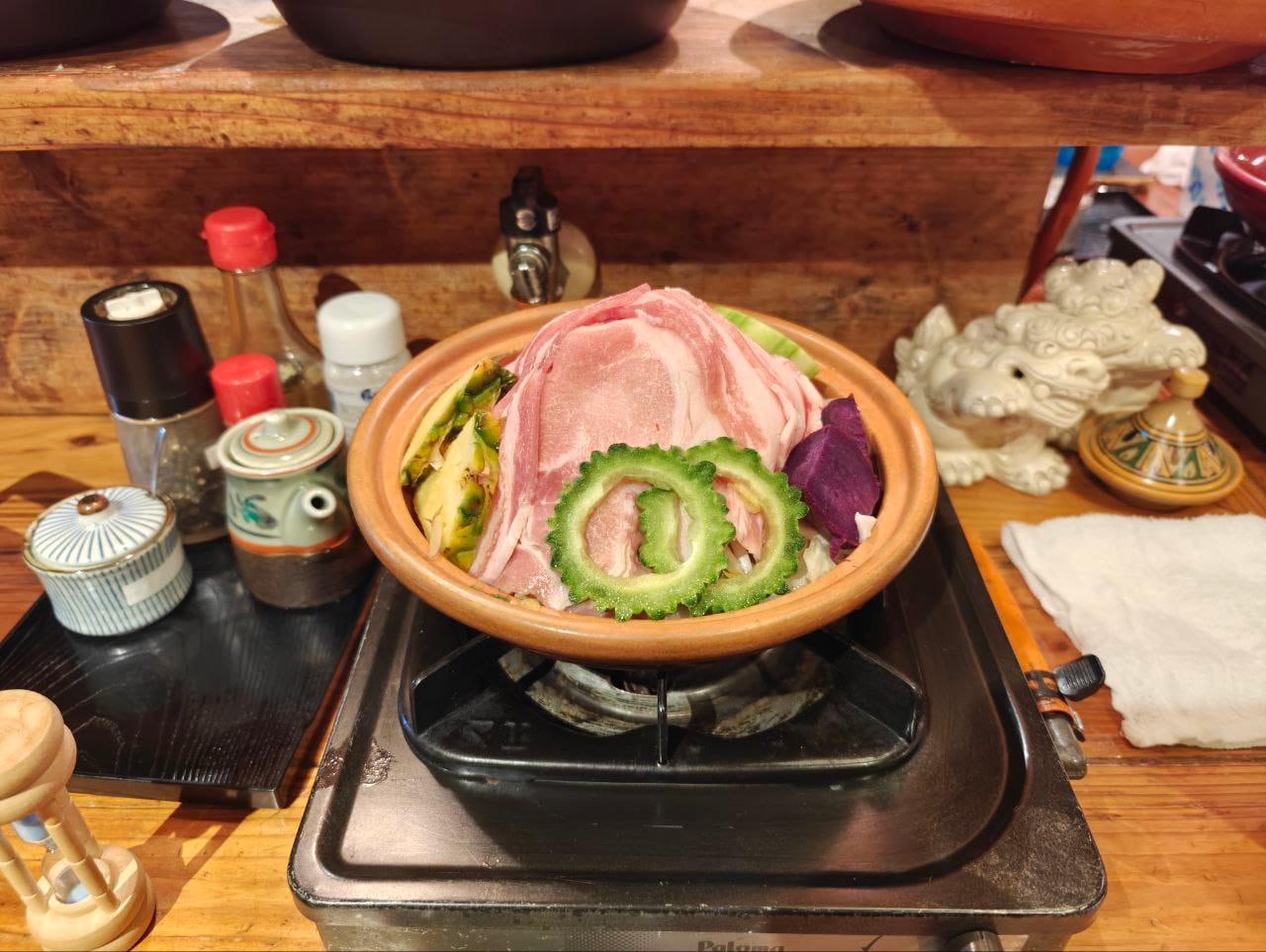
Not only is the restaurant ambience very heartwarming, the location of the restaurant all by itself at the side of a road adds to the entire feeling of a local spot. They sell Okinawan cuisine in the form of a steam pork dish, including other sides like their soft tofu called Taiken Yushidofu. It is a shabushabu meal with a clear soup base. After that, the same pot is used to stir fry soba noodle with their specially made sauce.
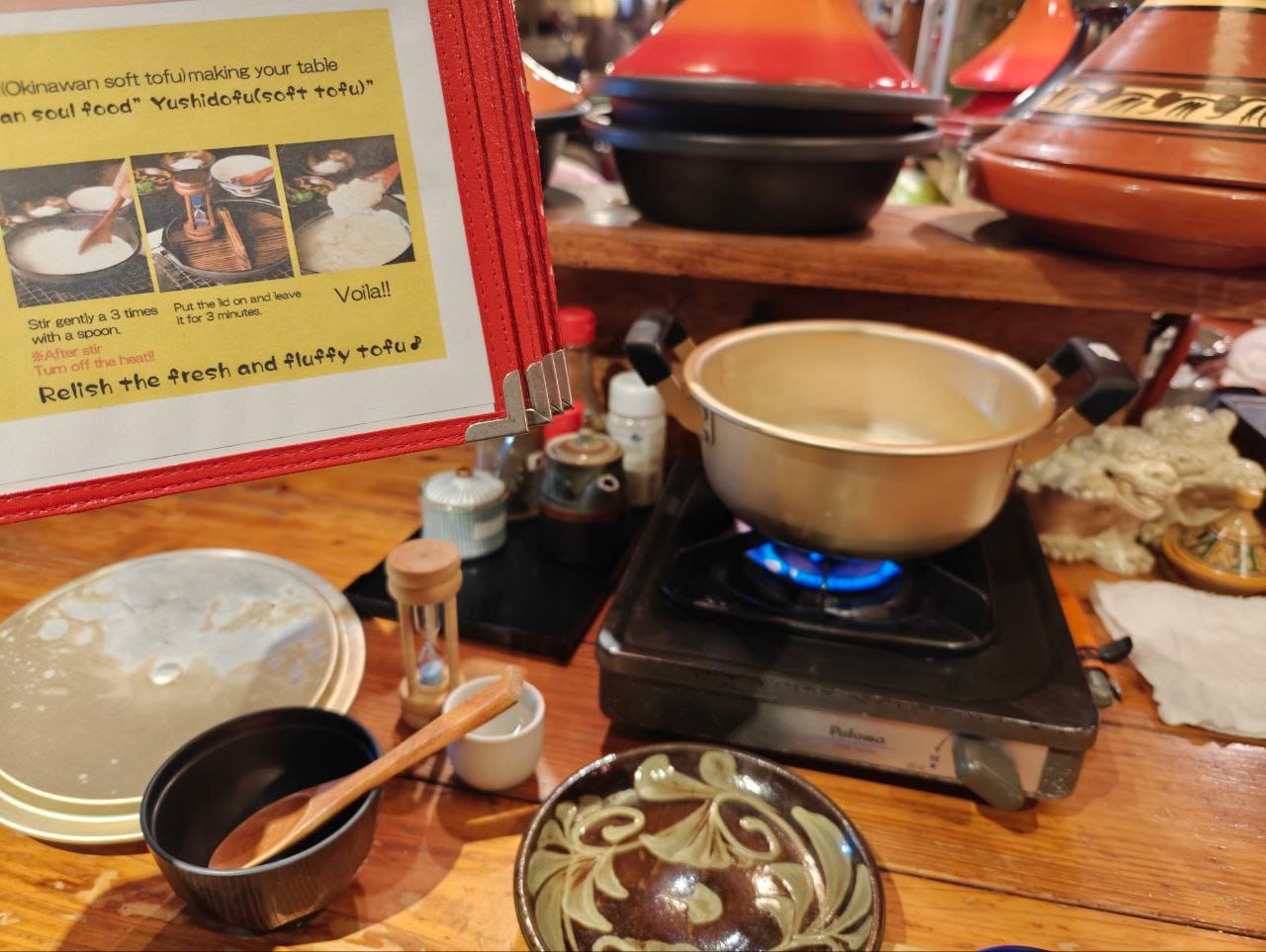
It was our first time tasting steam local pork slices and making our own tofu. Throughout the entire experience, the staff was friendly and approachable, helping to monitor the cooking time and introducing every dish in the set. This restaurant is popular and can get crowded, hence we recommend arriving early before the peak dinner time. Counter seats are also available but there may not be enough space for all the food if one decides to order the full set menu.
Dining: Marugen Ramen (Urasoe)
Rating: 8.1/10
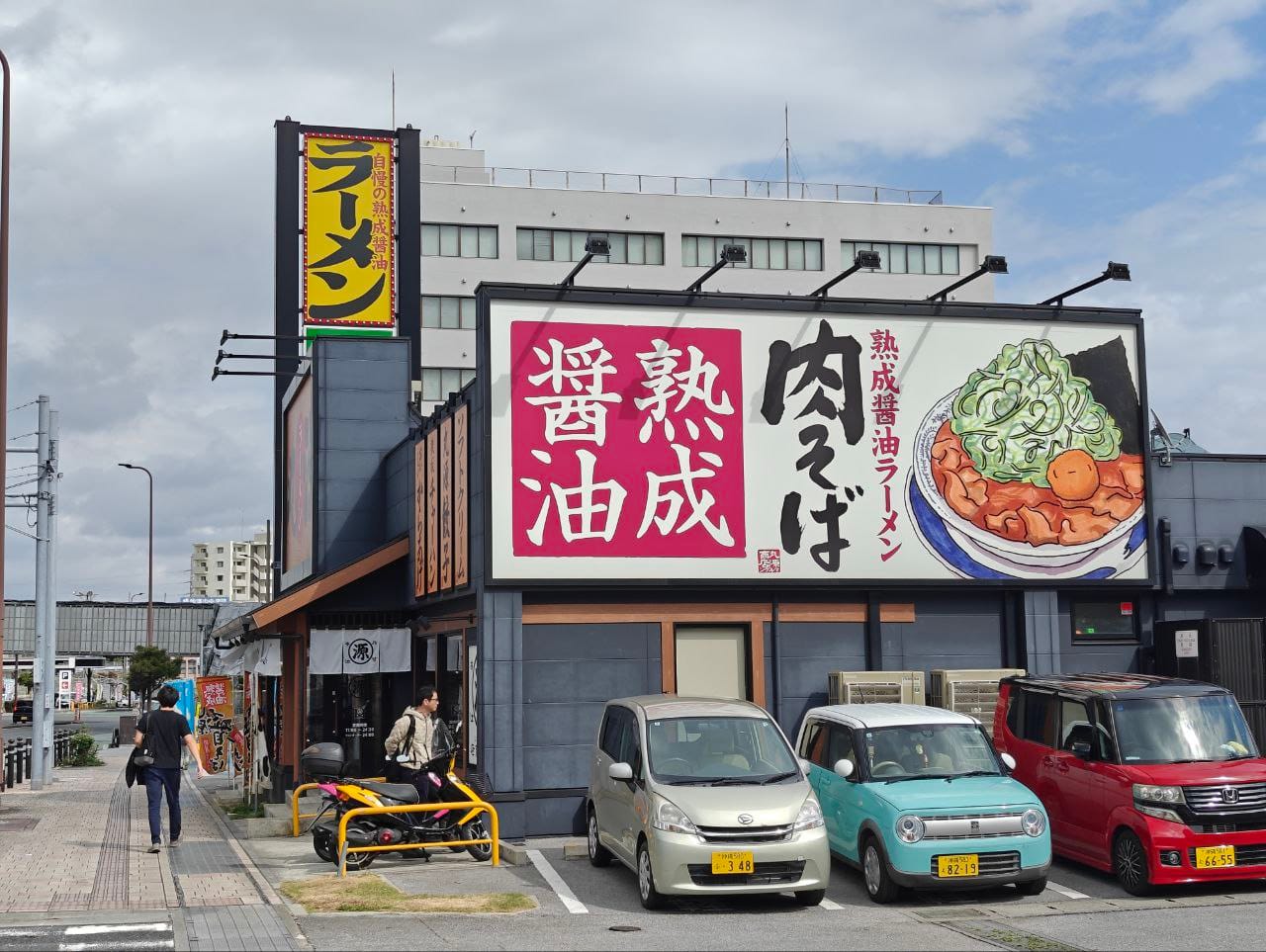
We chanced upon this ramen store on our bus journey through Urasoe. Turns out, this is a pretty popular dining spot for locals. It is a casual restaurant with japanese menu and many of the customers were families when we visited.

There are a few main signature dishes as well as some small sides like gyoza which came out to be very tasty. All the ingredients in the ramen and how to enjoy the ramen is detailed out on a food card at every table. Apart from the ramen and gyoza, most people also ordered their fried rice, which is highly recommended.
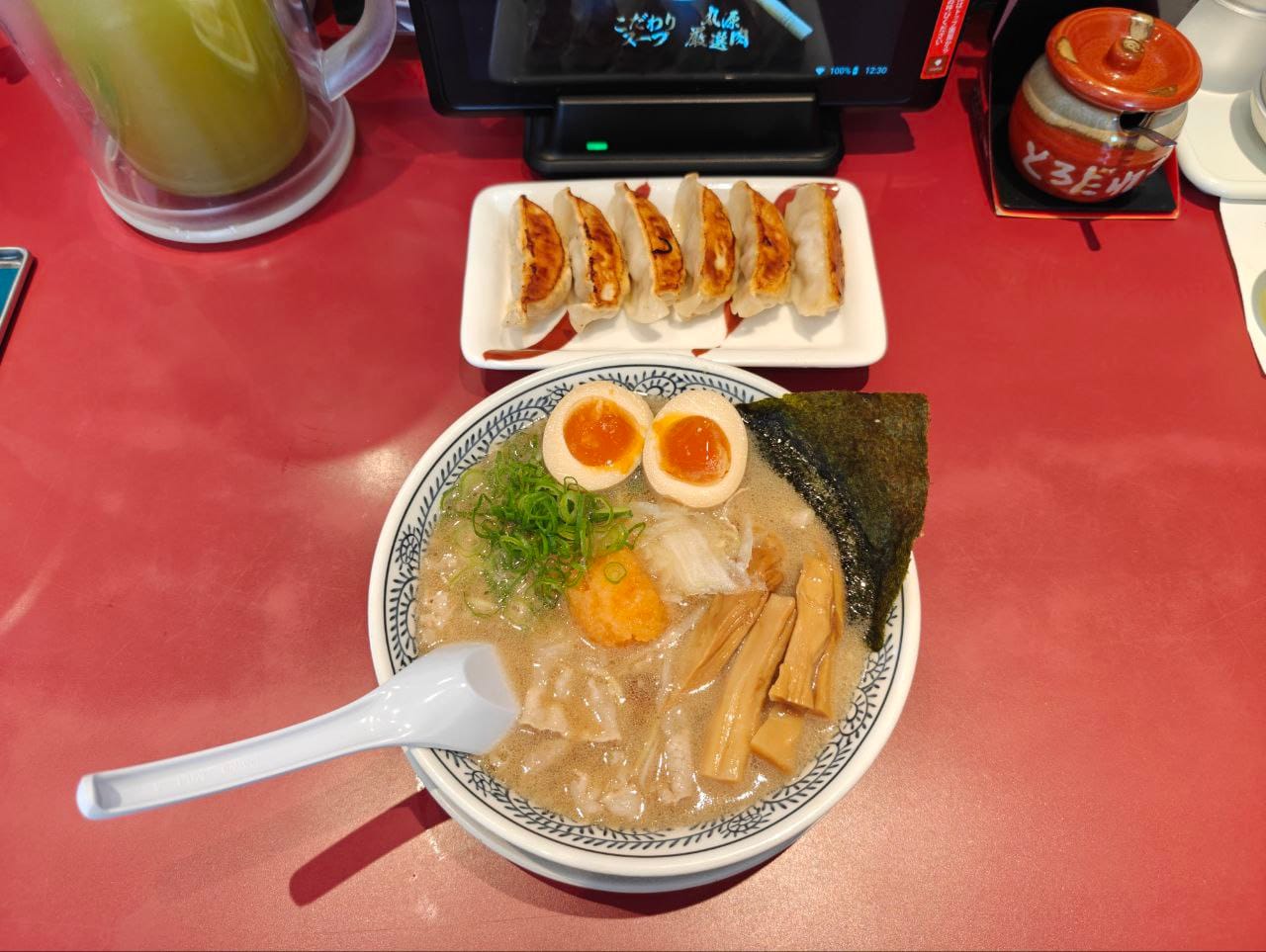
Overall, the ramen broth was rich and ingredients were fresh. Free flow japanese tea was also available although we found the tea to be average at best.
Dining: Branchu Okinawa (Naha)
Rating 7.8/10
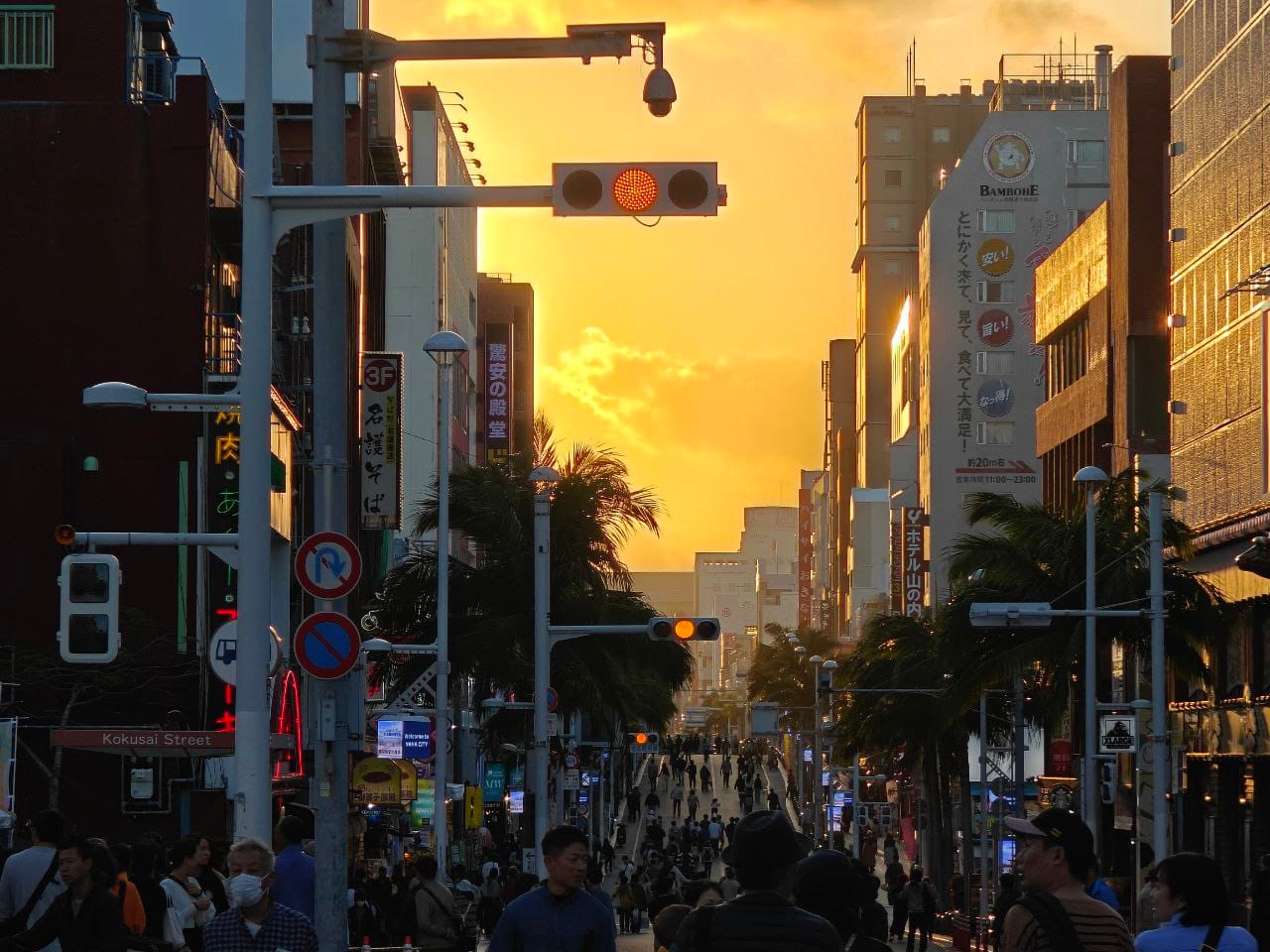
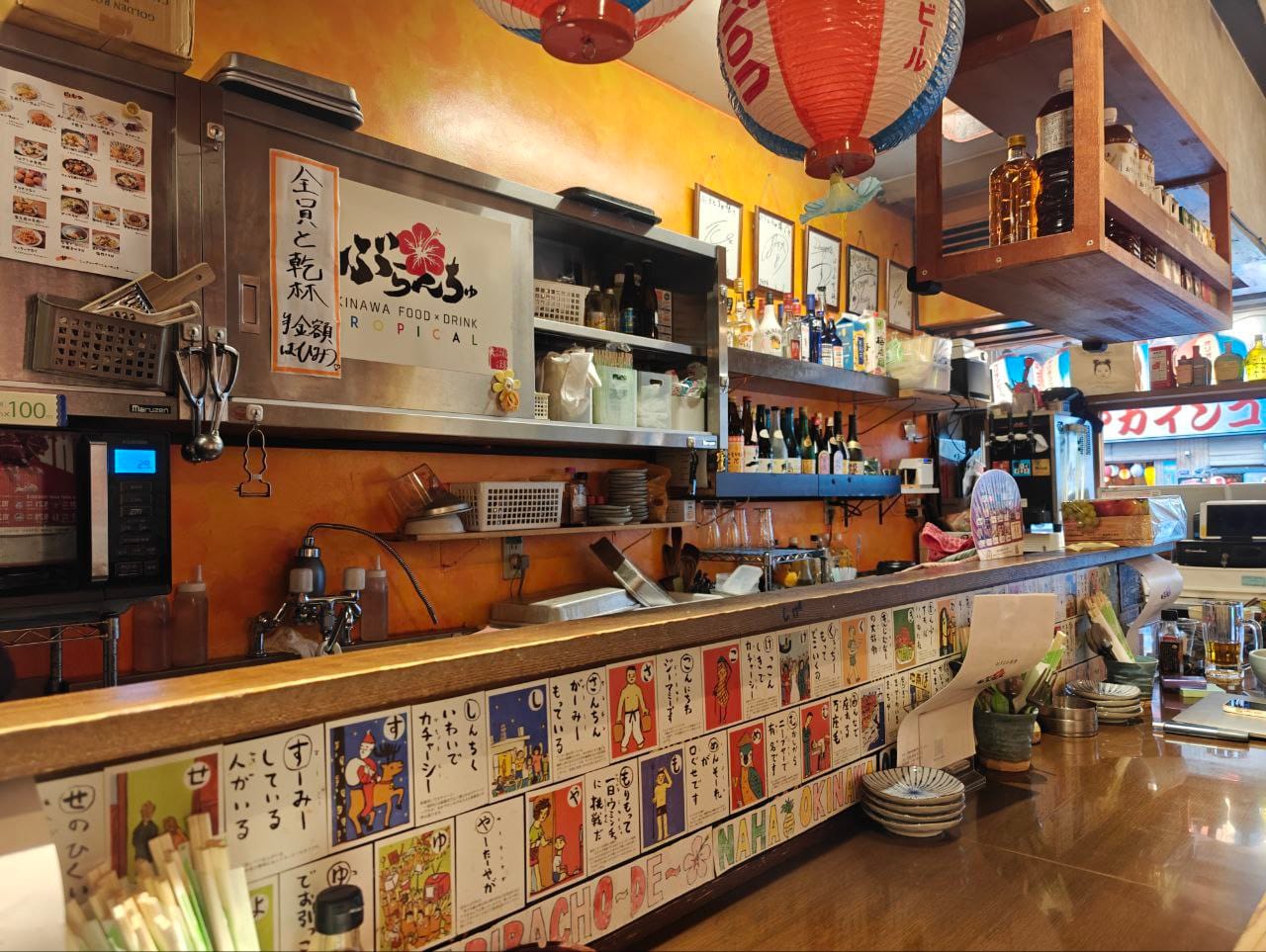
Located along Kokusai Street (the main shopping strip of Naha), this is an izakaya in a small but prime location. There are many similar stores nearby, so which izakaya to visit will largely depend on individual willingness to queue. As we went in the early evening, availability of seating was not an issue.
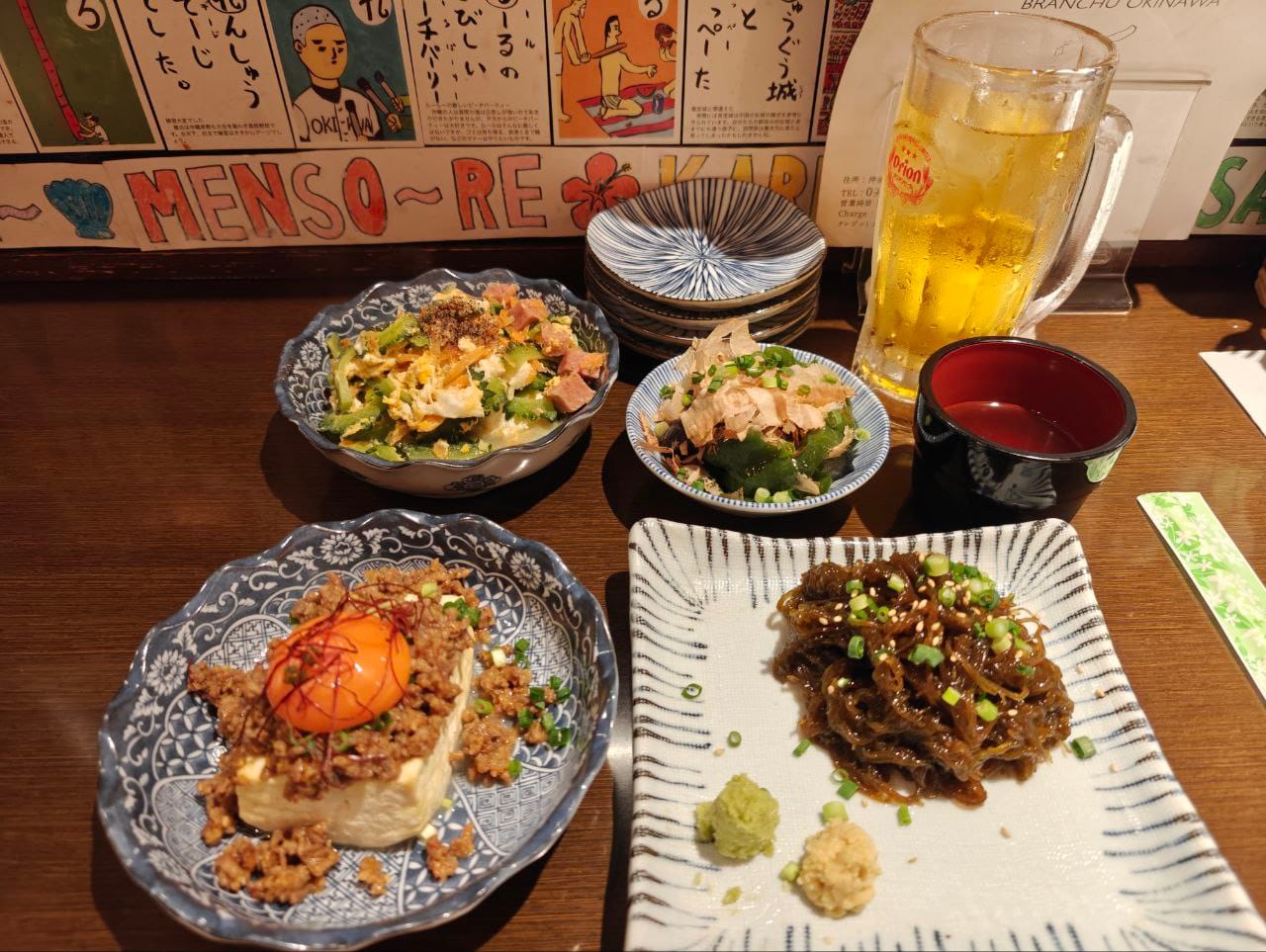
The menu offers many local delicacies, with spam and goya (bitter melon) commonly featured in the dishes. As they are all small portions, most items can seem to be rather pricey (around 600 to 700 yen per dish) and there is a premium attached to the okinawan izakaya experience. That said, we think it is certainly worth trying a late night izakaya when the place comes alive.
Kokusai Street itself is certainly worth visiting in the day too, with many commercial shops and a local market.
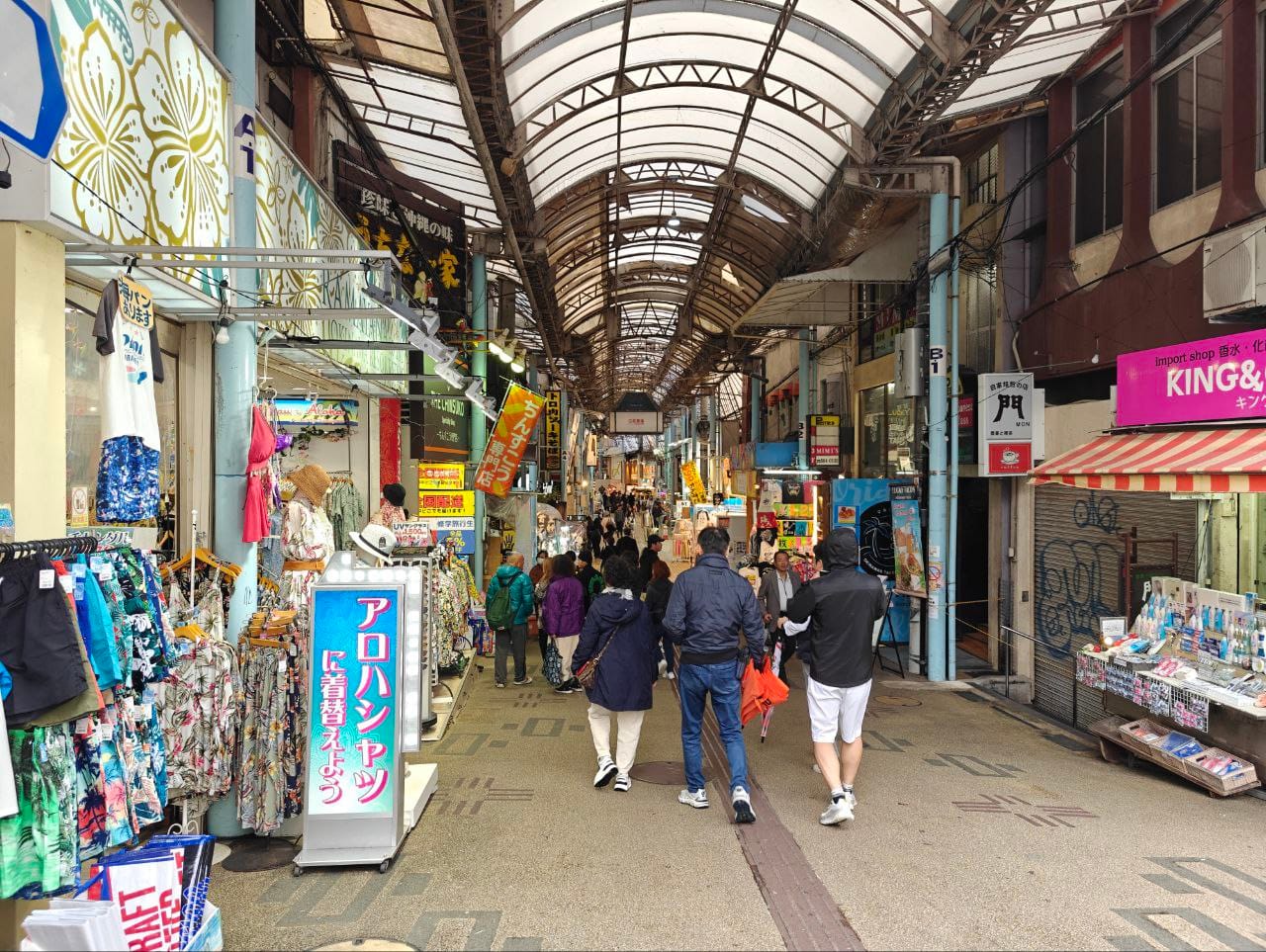
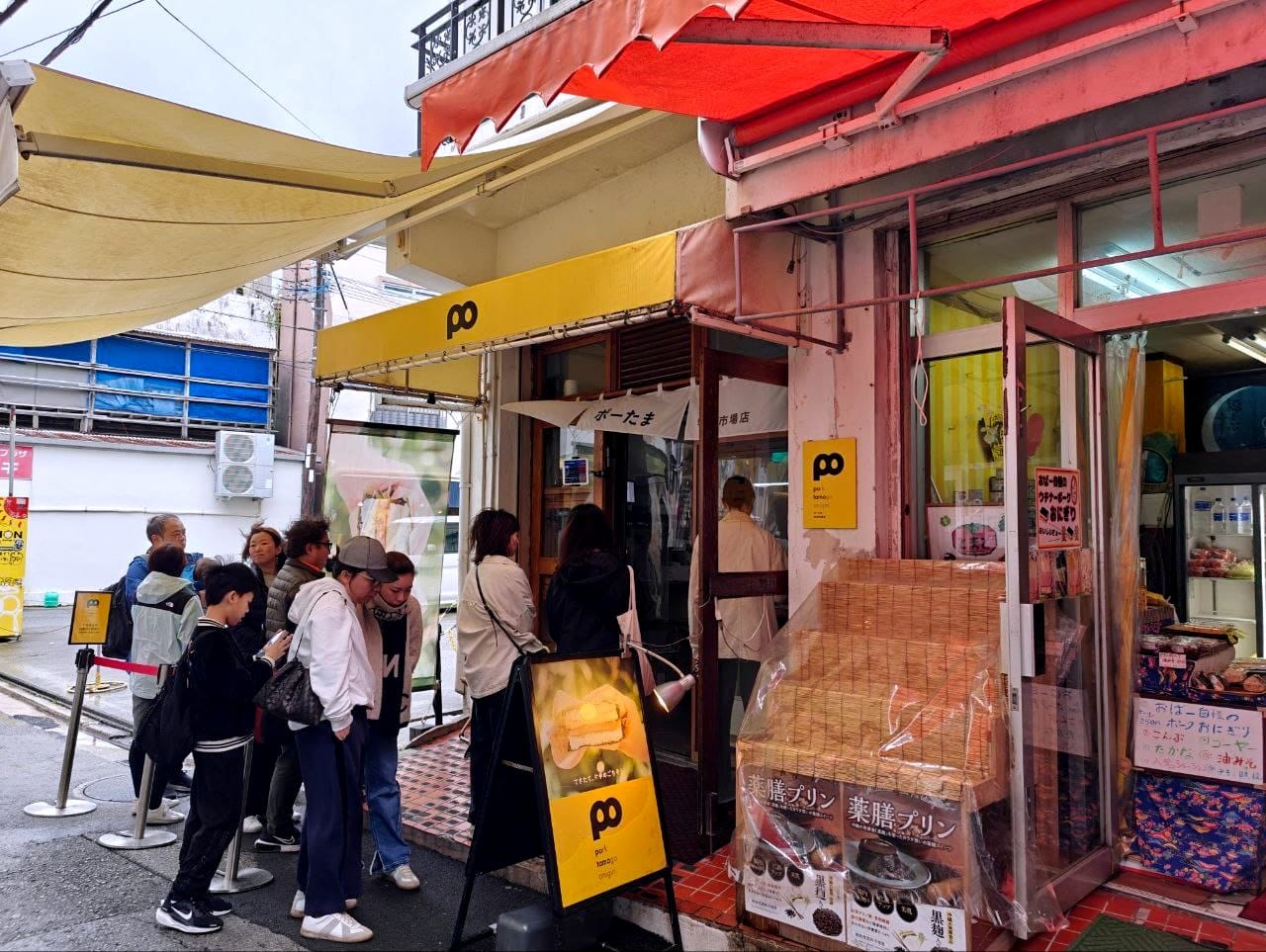
Activity: Minatogawa Stateside Town
Rating 8.0/10
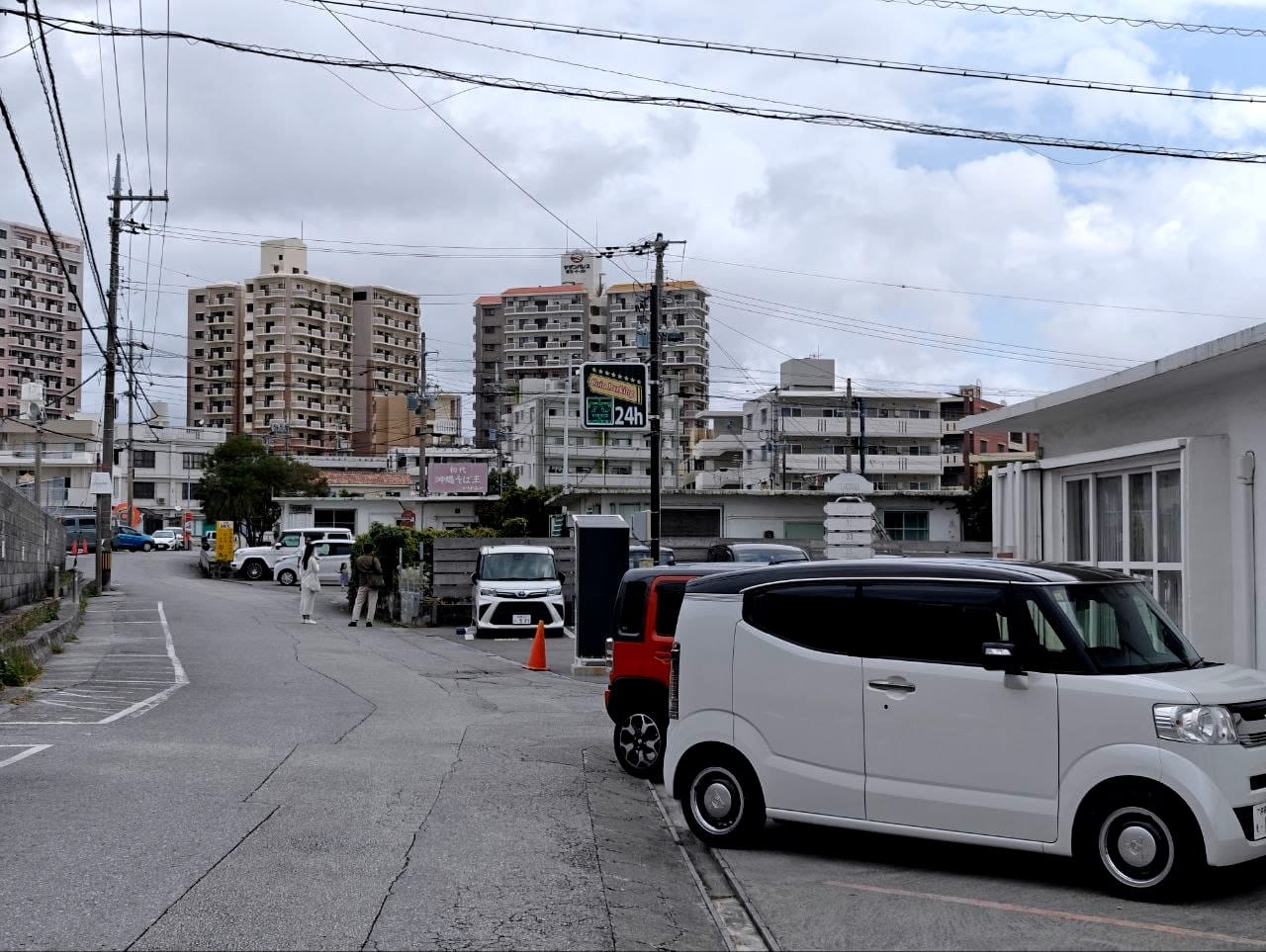
Not far from Marugen Ramen is the repurposed cluster of commercial shops called Minatogawa Stateside Town. This area has gained popularity amongst the indie community, with hipster cafes and lifestyle stores occupying the bungalows converted from homes. These are previously American-style housing for the military personnel stationed in Okinawa and now renovated into a commercial attraction.
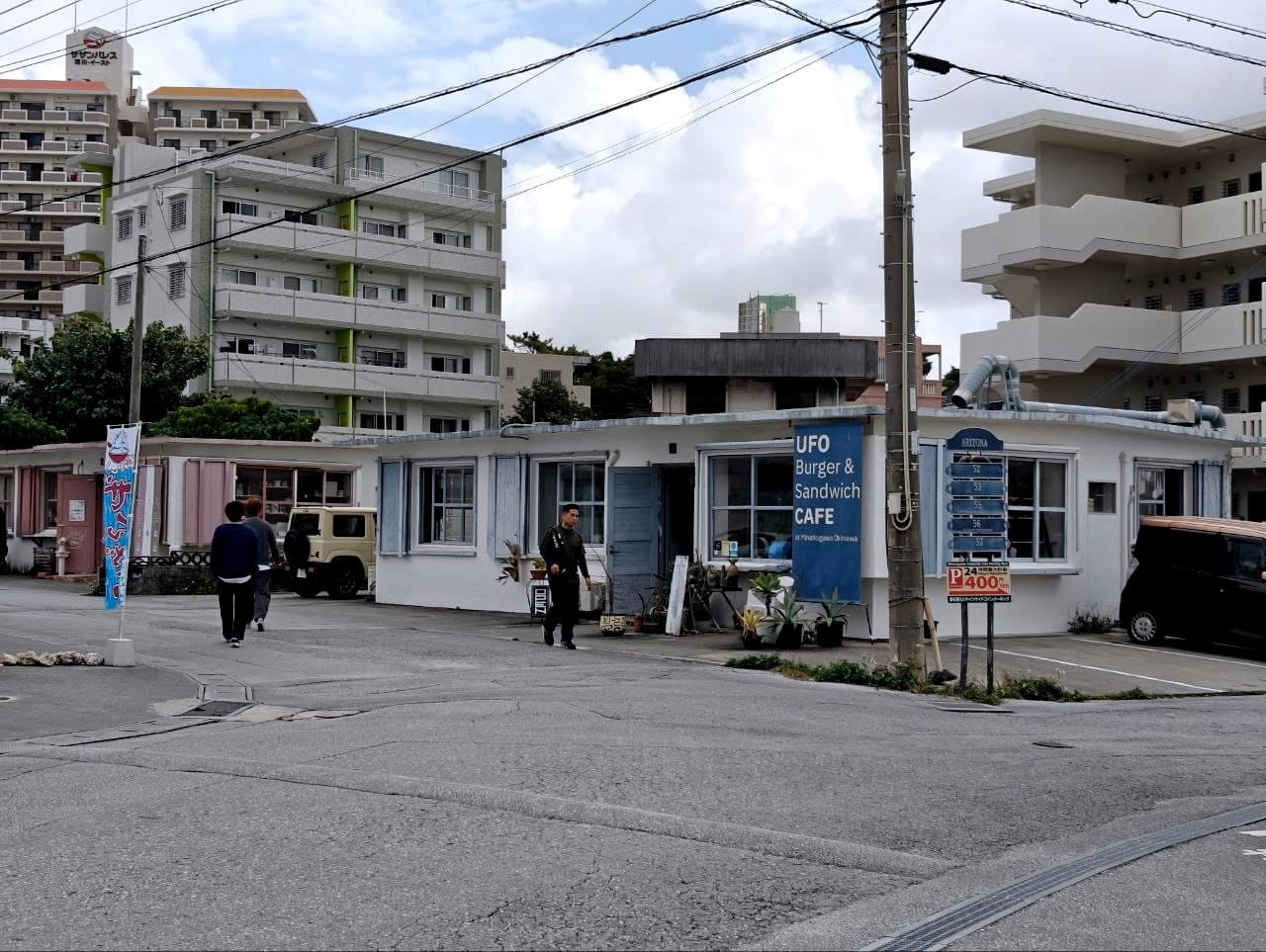
The area consists of multiple rows of houses along a handful of streets, and it is on slightly elevated terrain. Hence, it is definitely more convenient to access the location with a car. However, in our case where we took a public bus that stopped at the foot of the hill, the 10 minutes walk up the slope was still manageable.
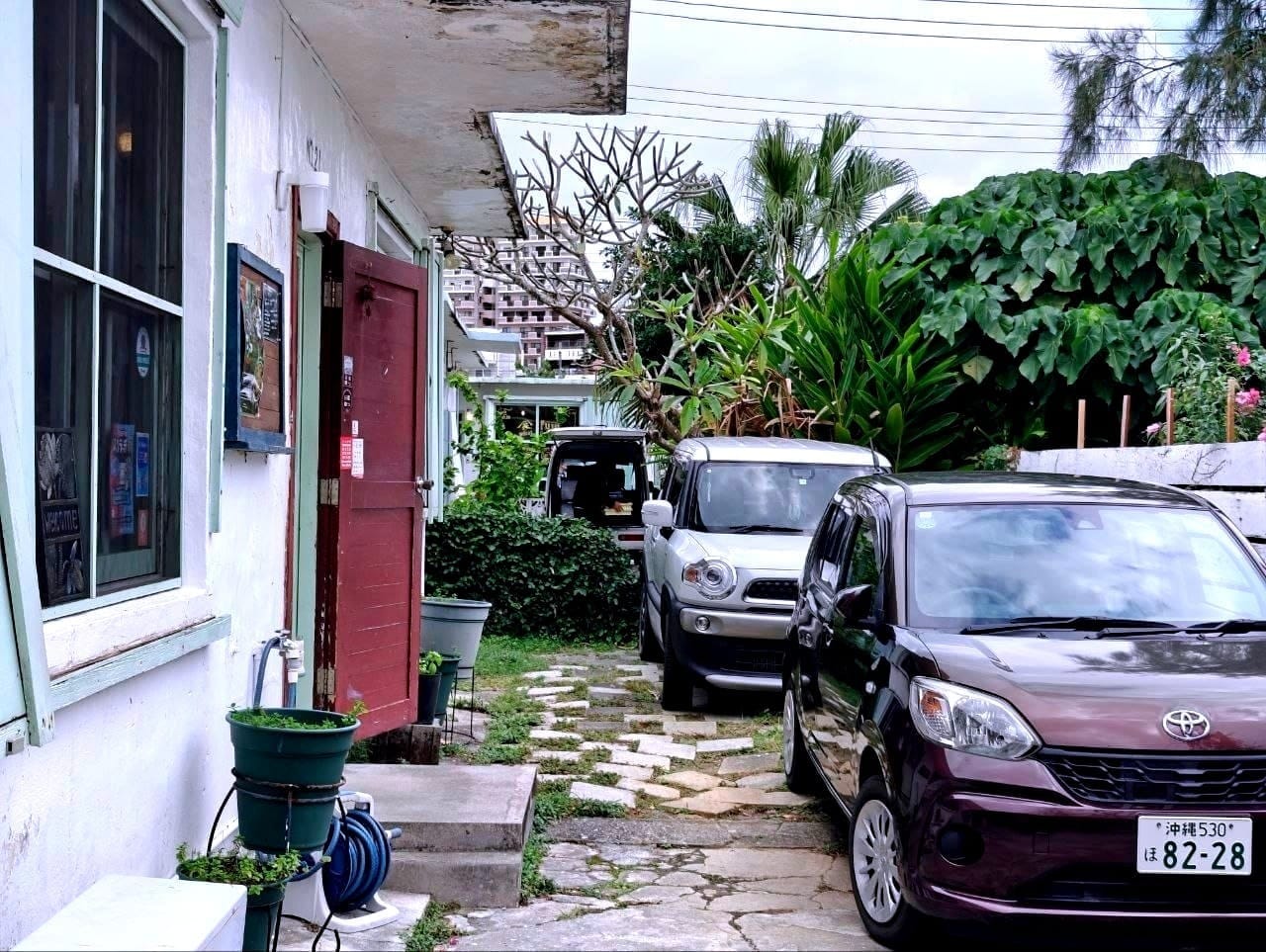
The place immediately transports visitors back to the yesteryears, evoking a laid-back charm of an old town. It will be especially relaxing for a lazy morning or afternoon, provided you can find a seat given the limited space in each shop.
Activity: Shuri Castle
Rating 8.1/10
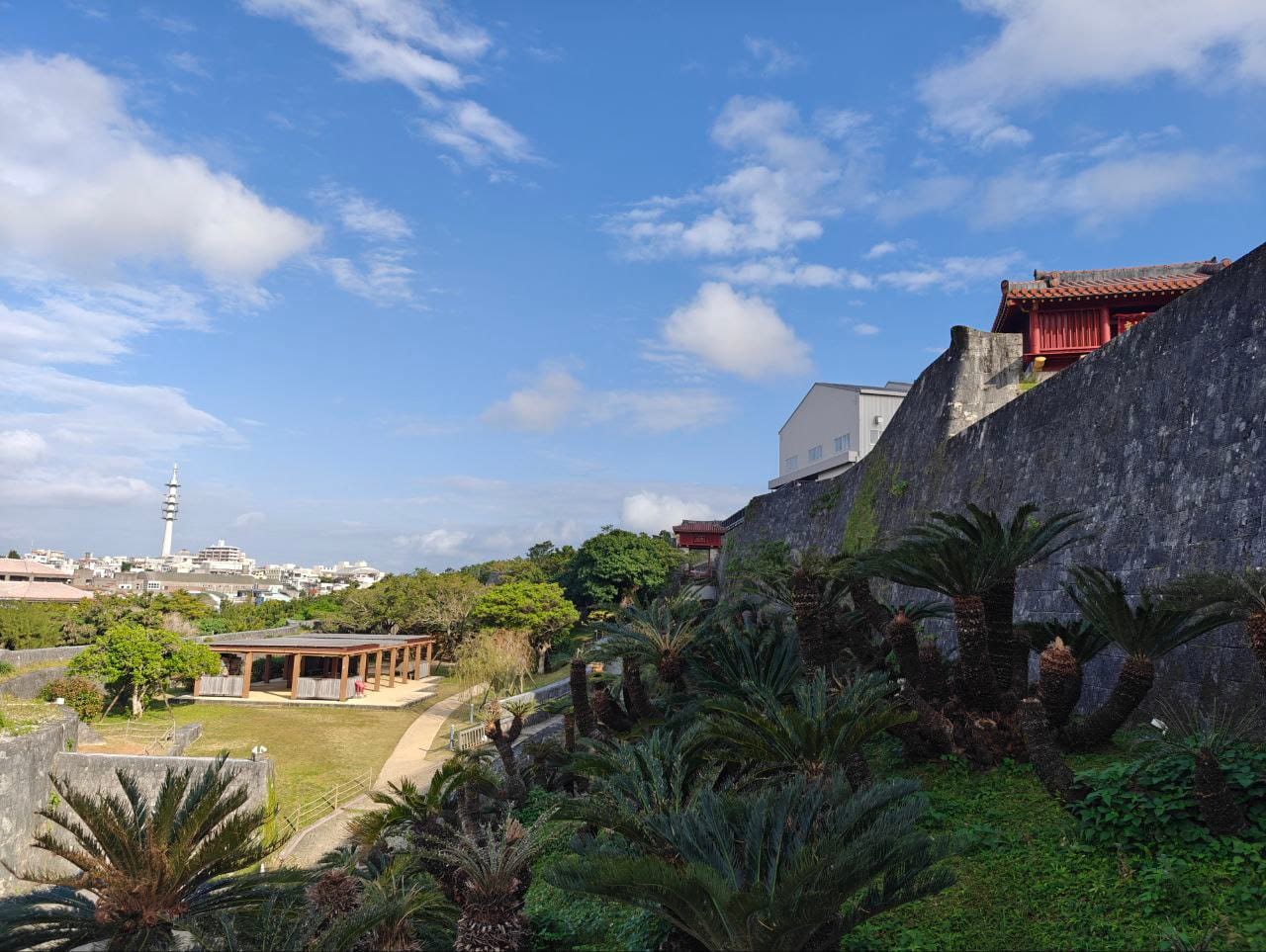
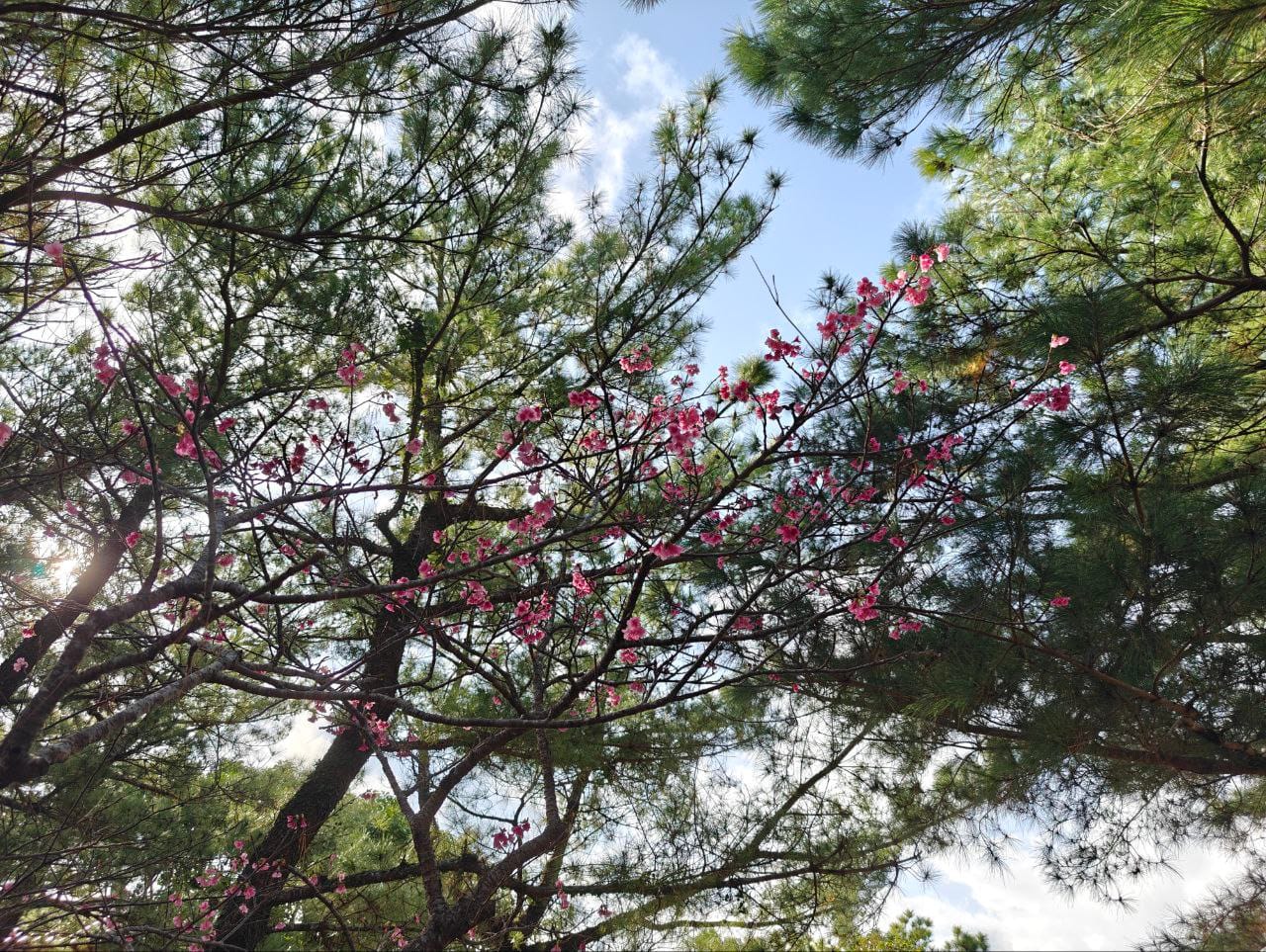
As part of our chase for early signs of cherry blossom, we researched for a few cherry blossom spots on Okinawa main island. Among them, there is a large cherry blossom festival in Nago at the Nago Castle Park, a northern city which requires a few hours drive from Naha. Another popular option is Mount Yaedake at Motobu, also at the northern tip of the island.

As we mainly based ourselves at Naha, cherry blossom is less concentrated but nonetheless can be found at Yogi Park and Shuri Castle Park. We caught early blooming of the Kanhizakura cherry trees at both locations. As Yogi Park is a small neighbourhood park with not much else there, we recommend Shuri Castle for the historical attraction that it is (and cherry blossom being the bonus cherry on top).
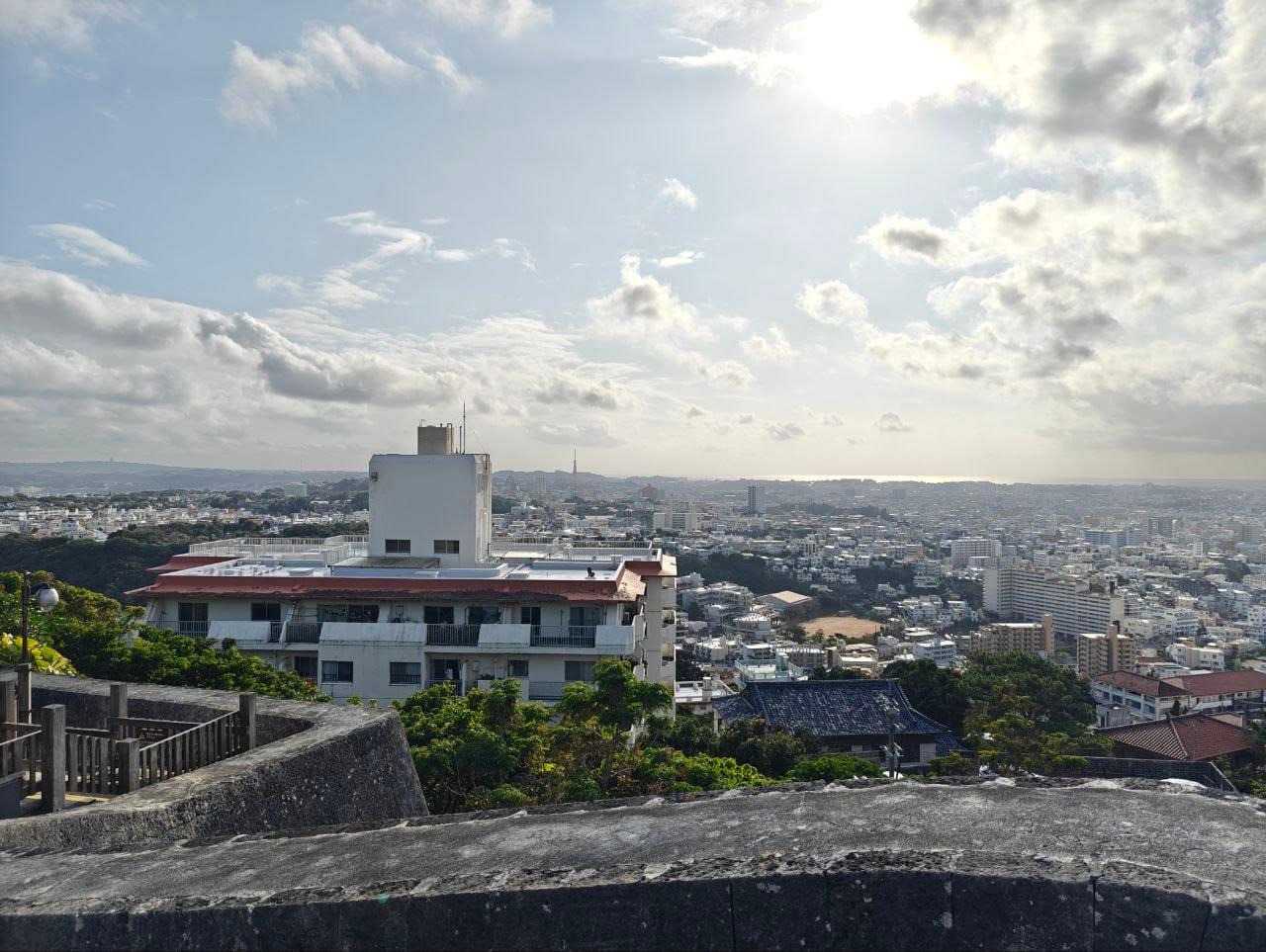
It is a top spot for a leisurely stroll in our view and as opposed to the main tourist entrance via Shureimon Gate, we started our walk via Uenomo Park. This route begins with a steeper stairs climb but the rest of the walk will be downhill along the castle walls.

